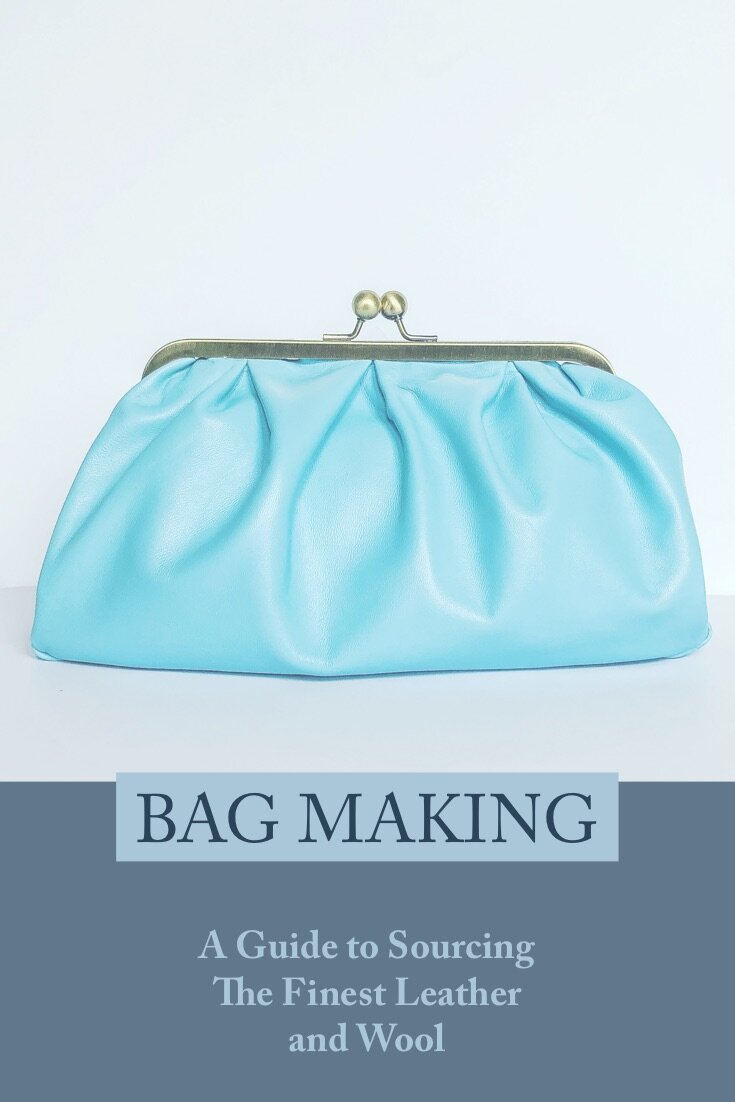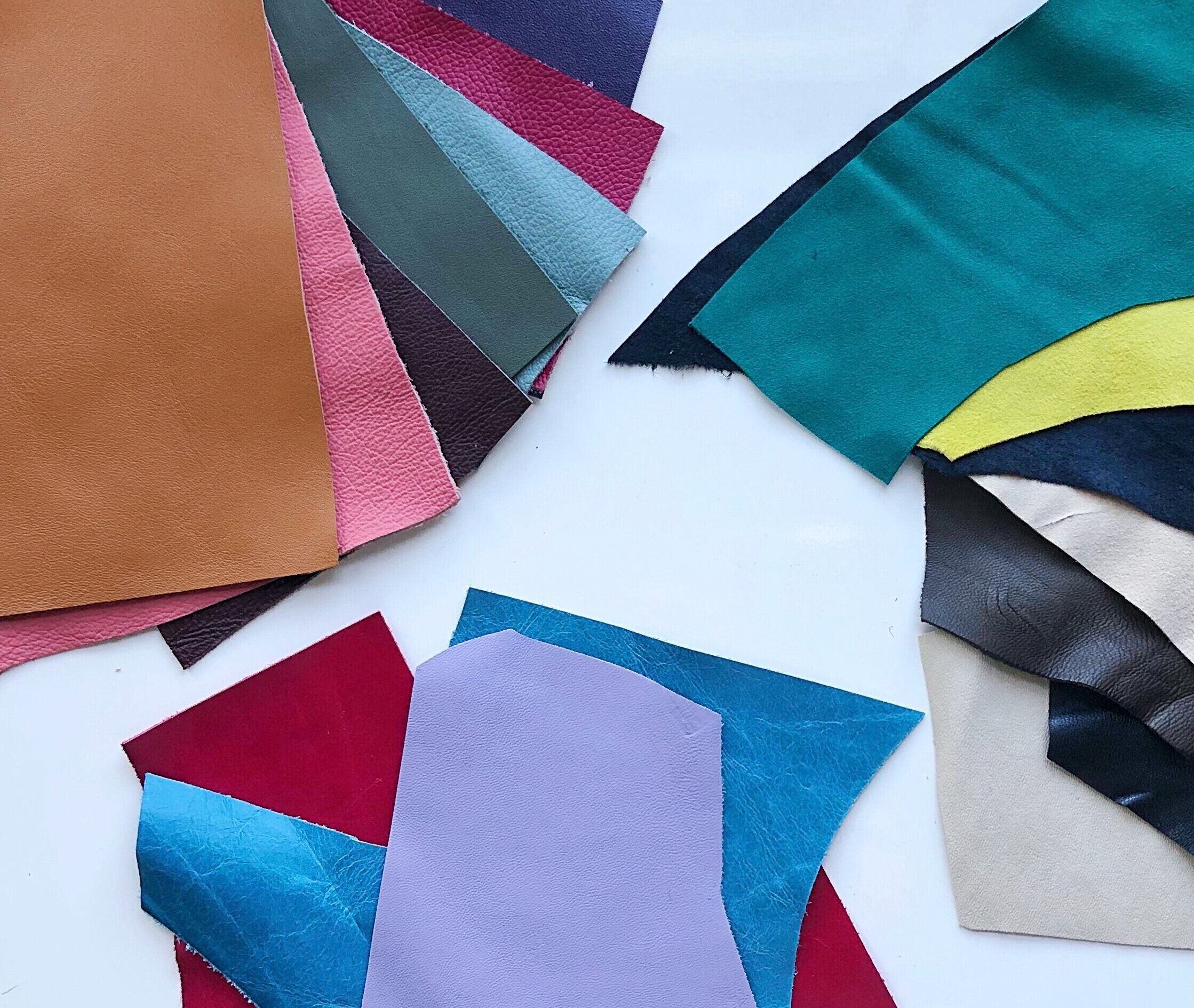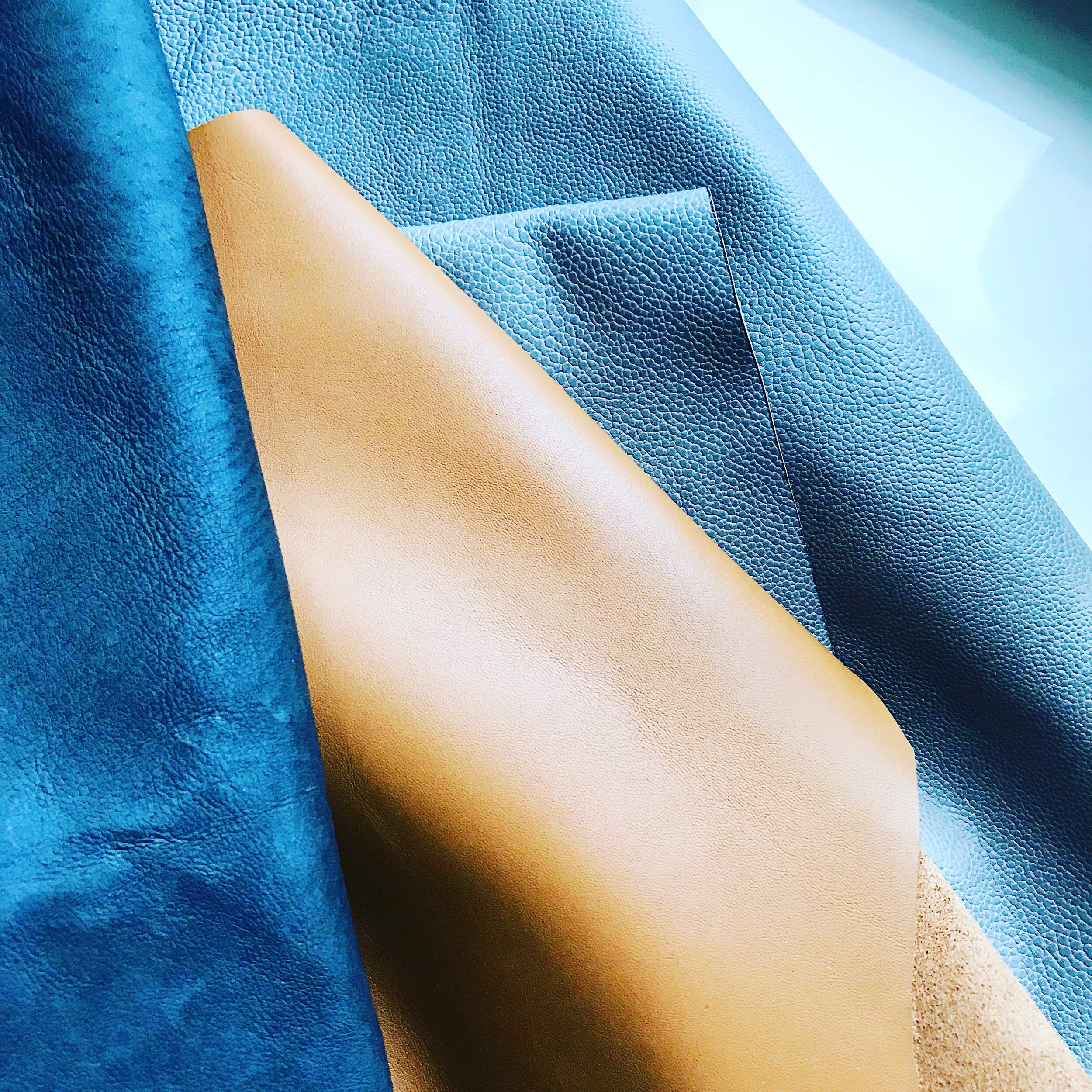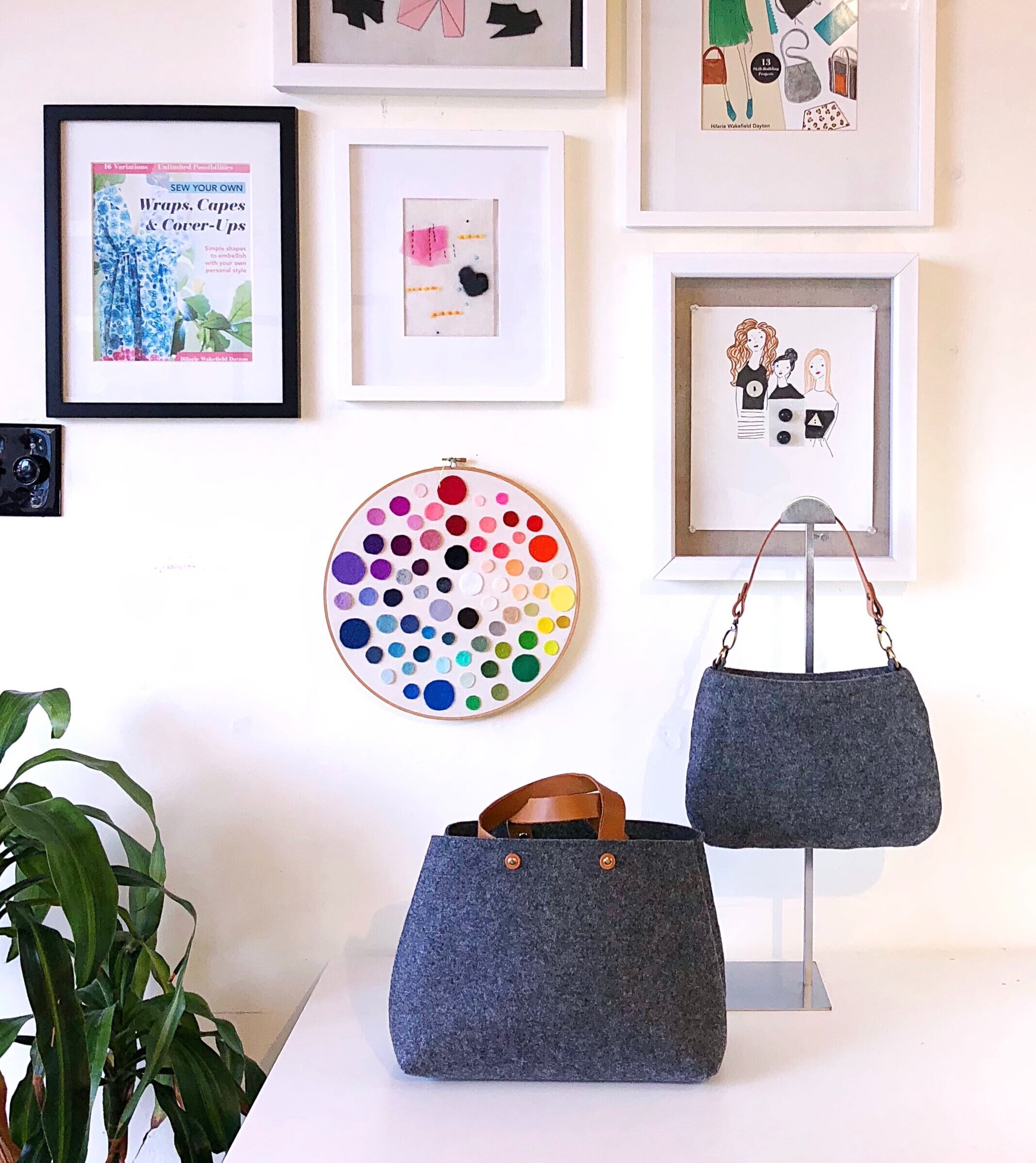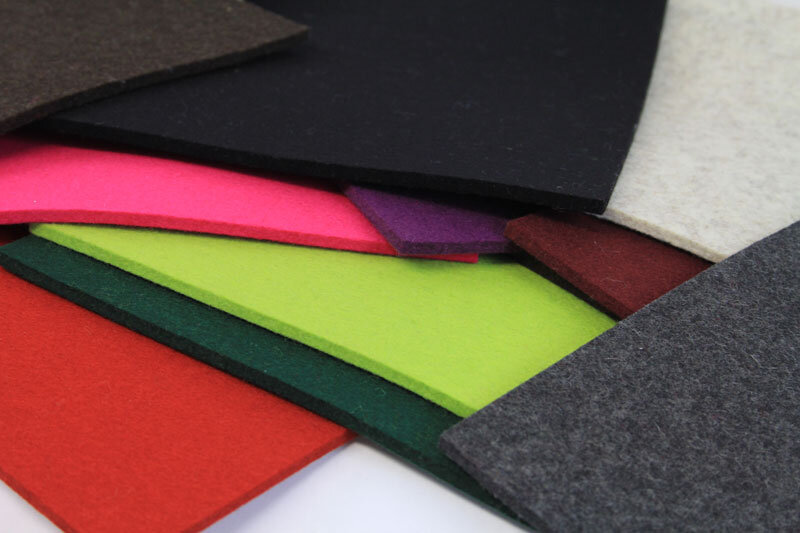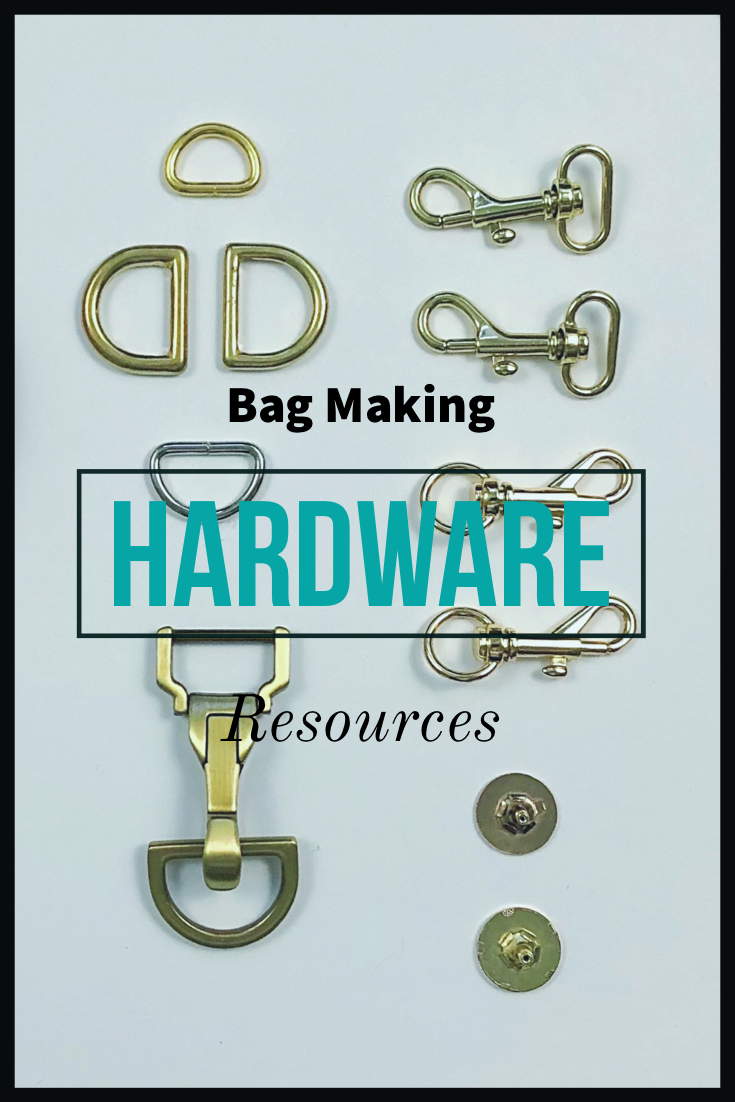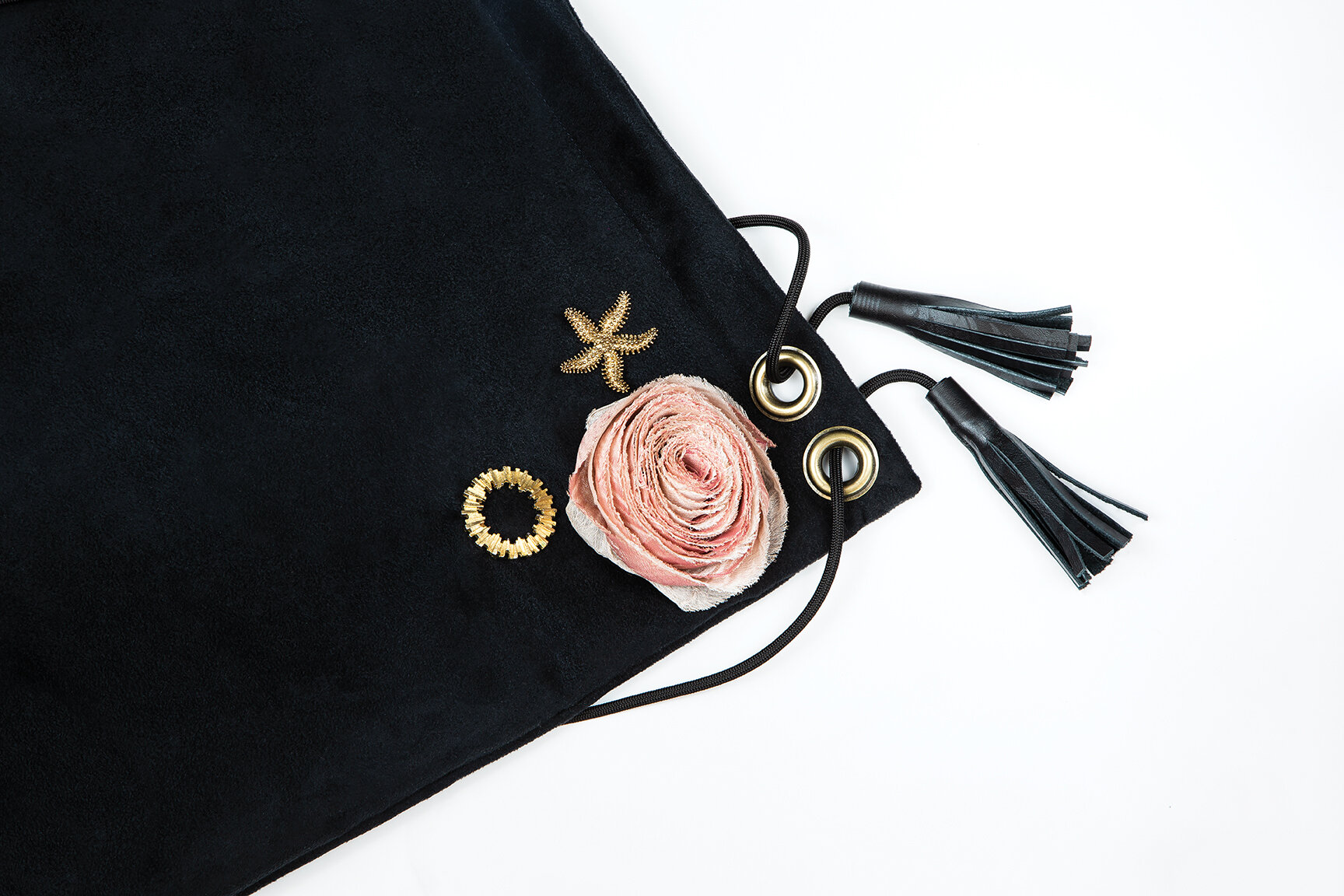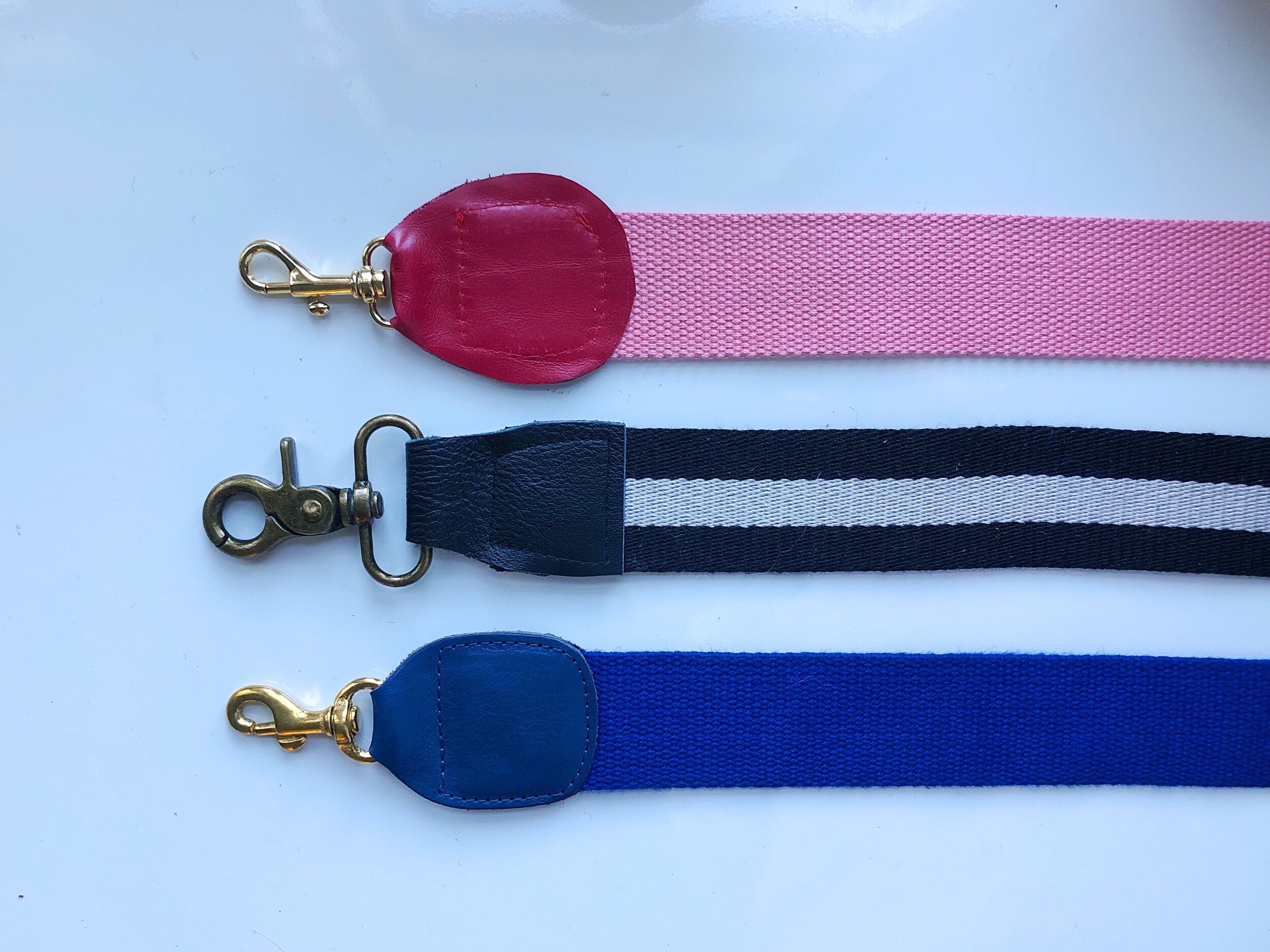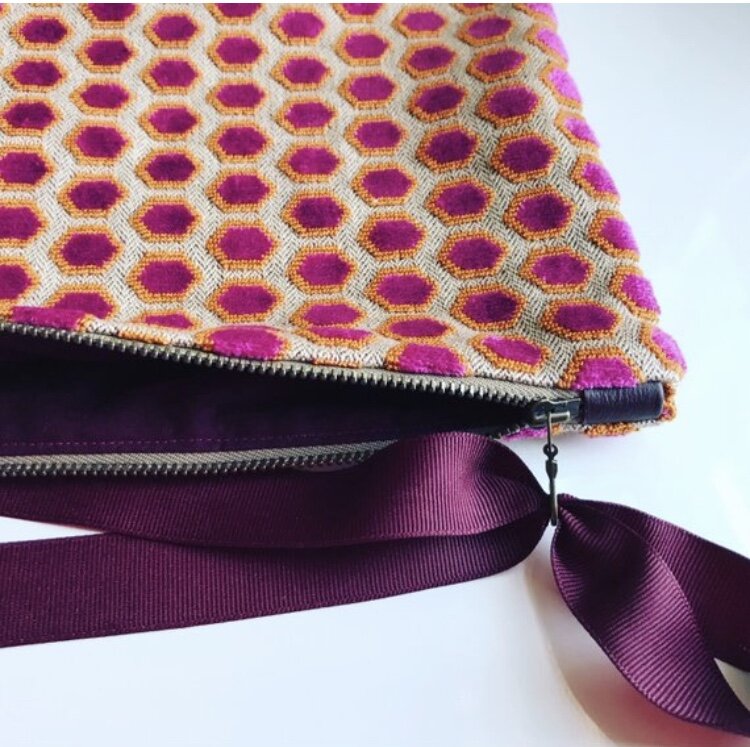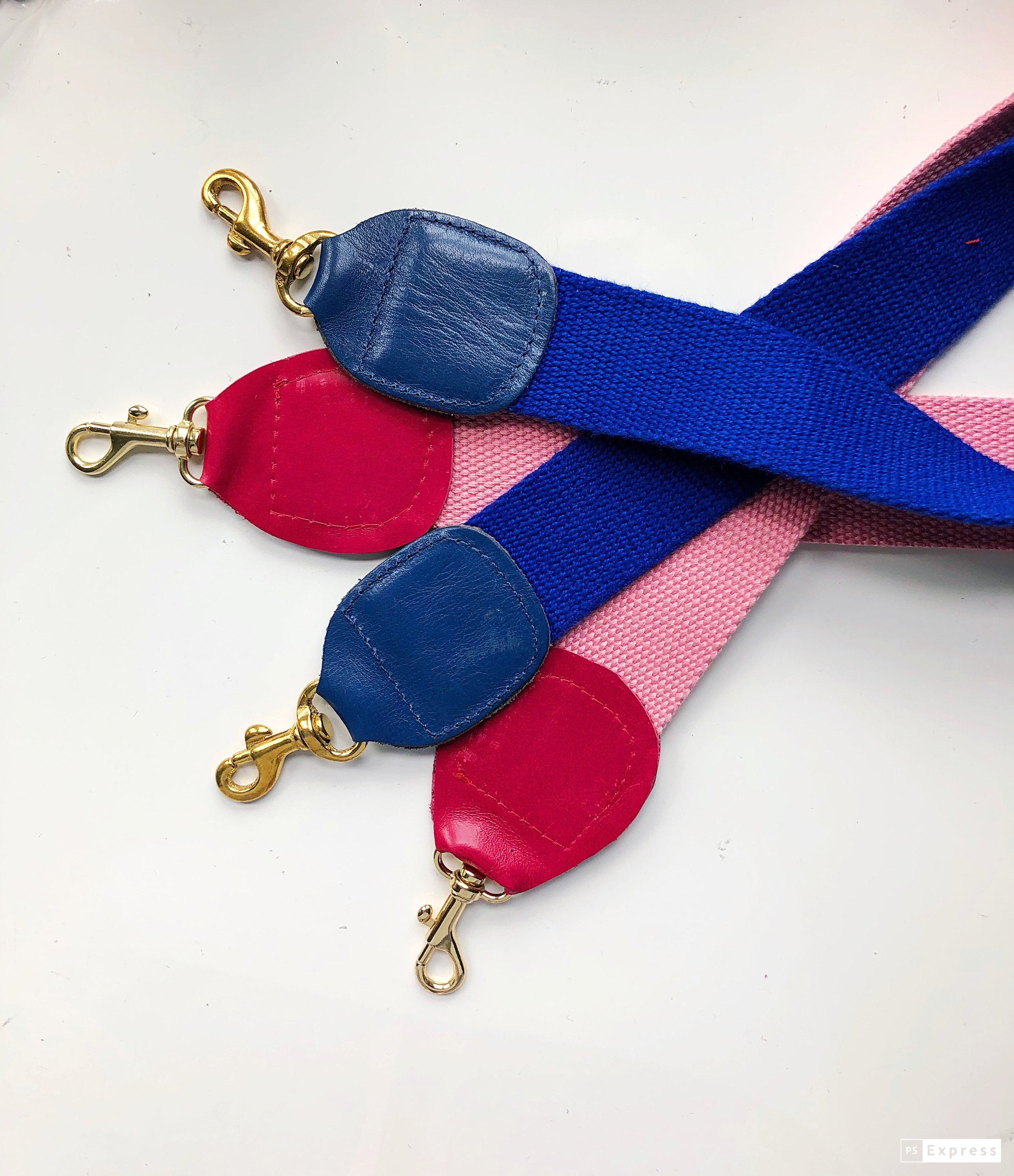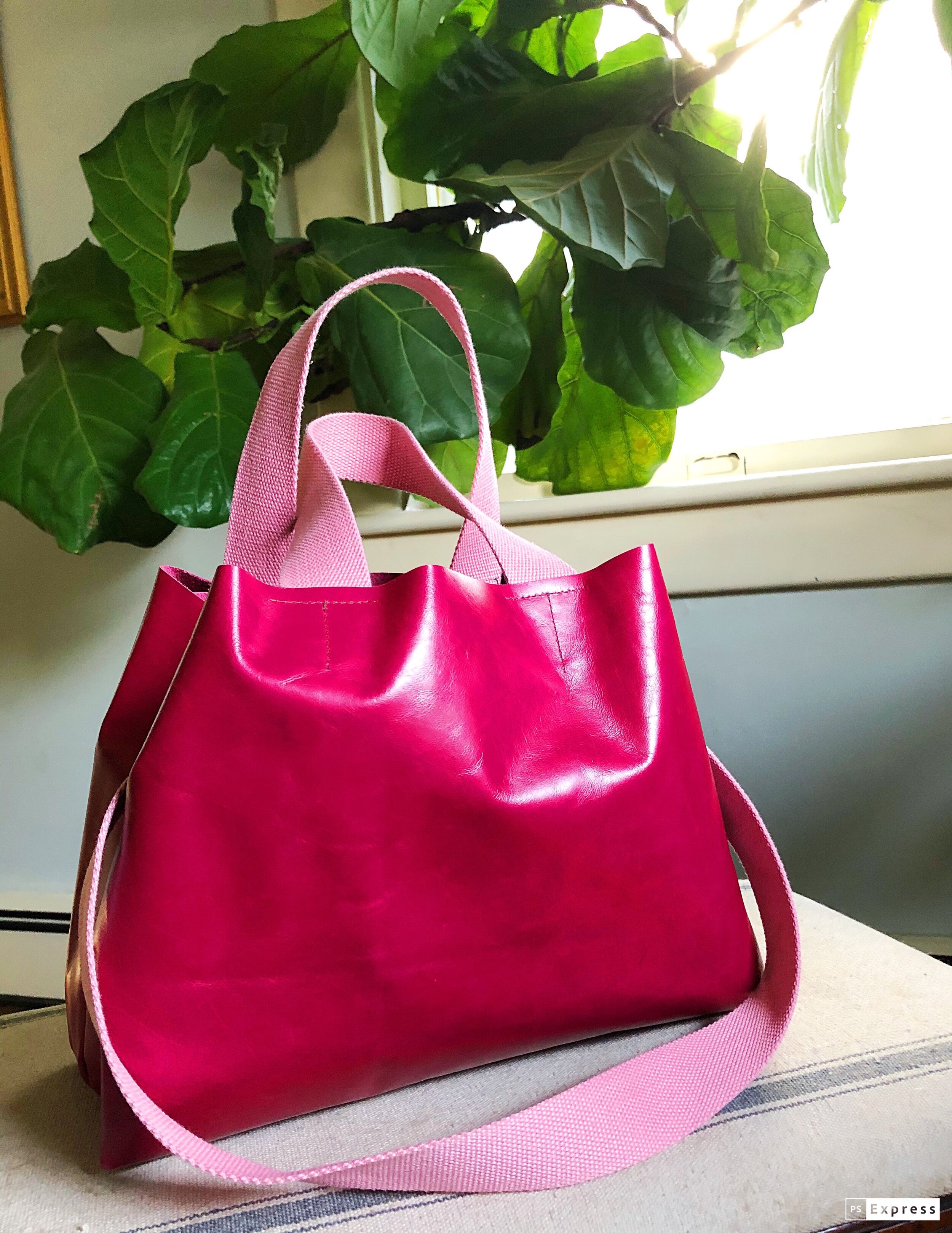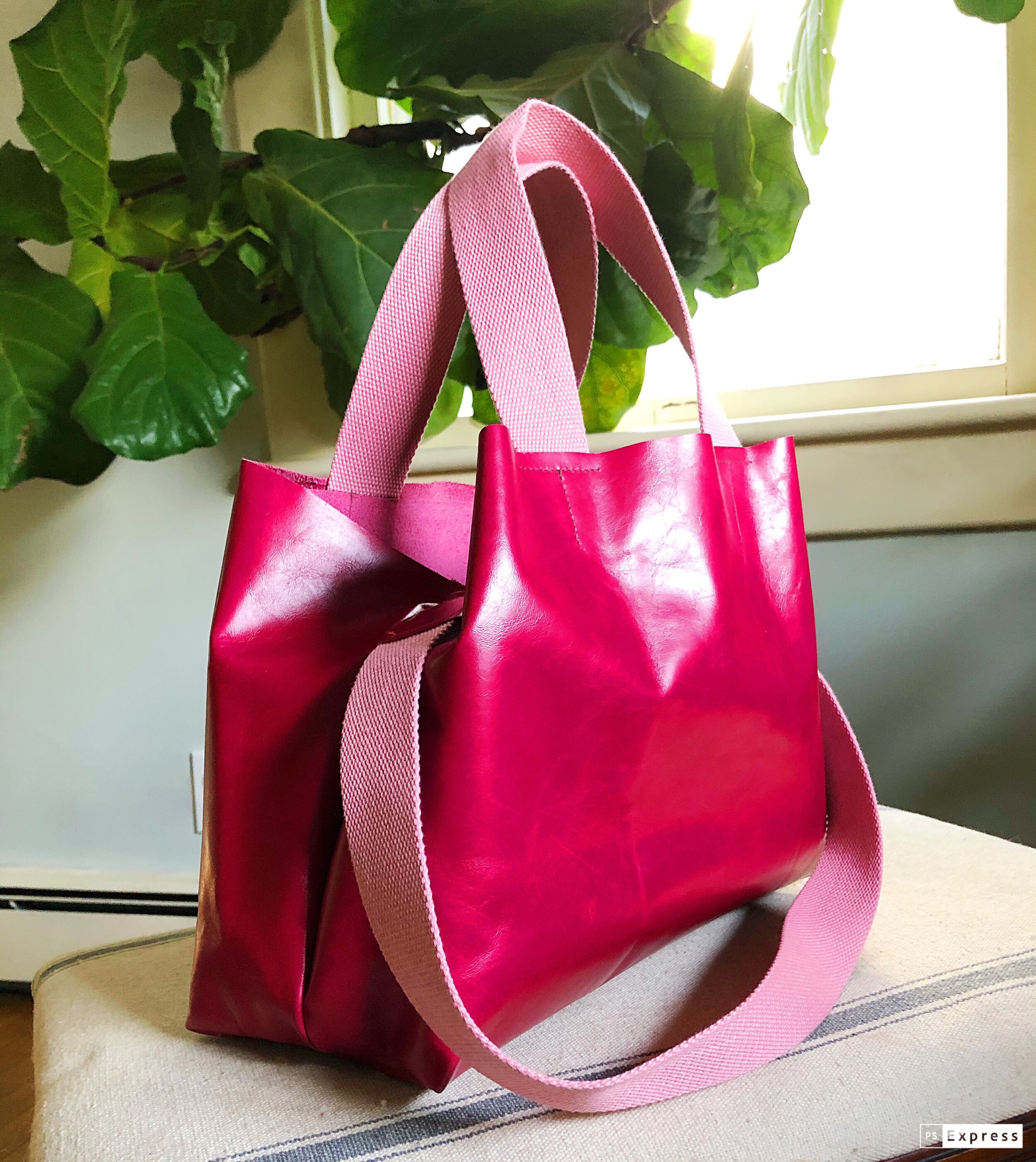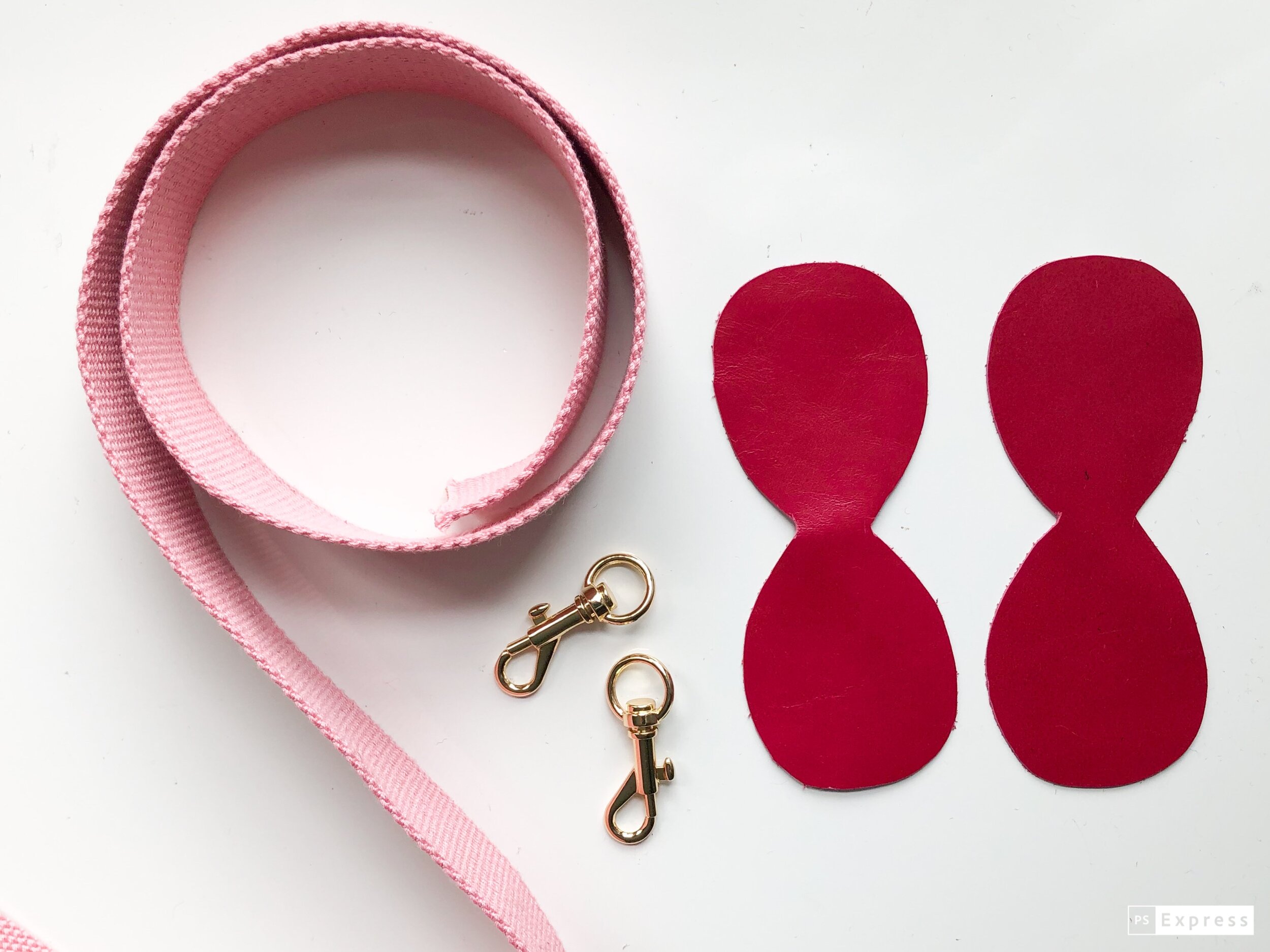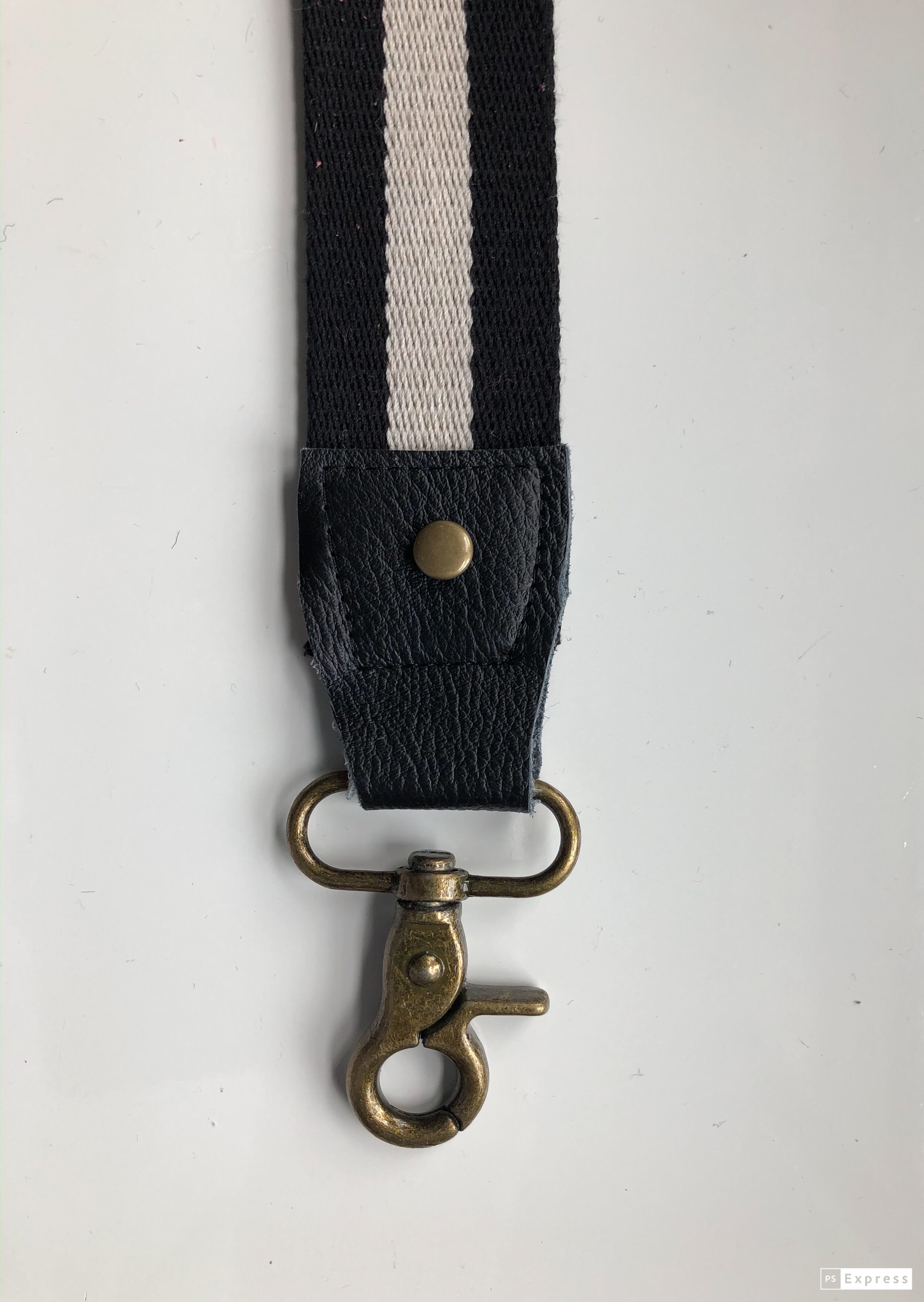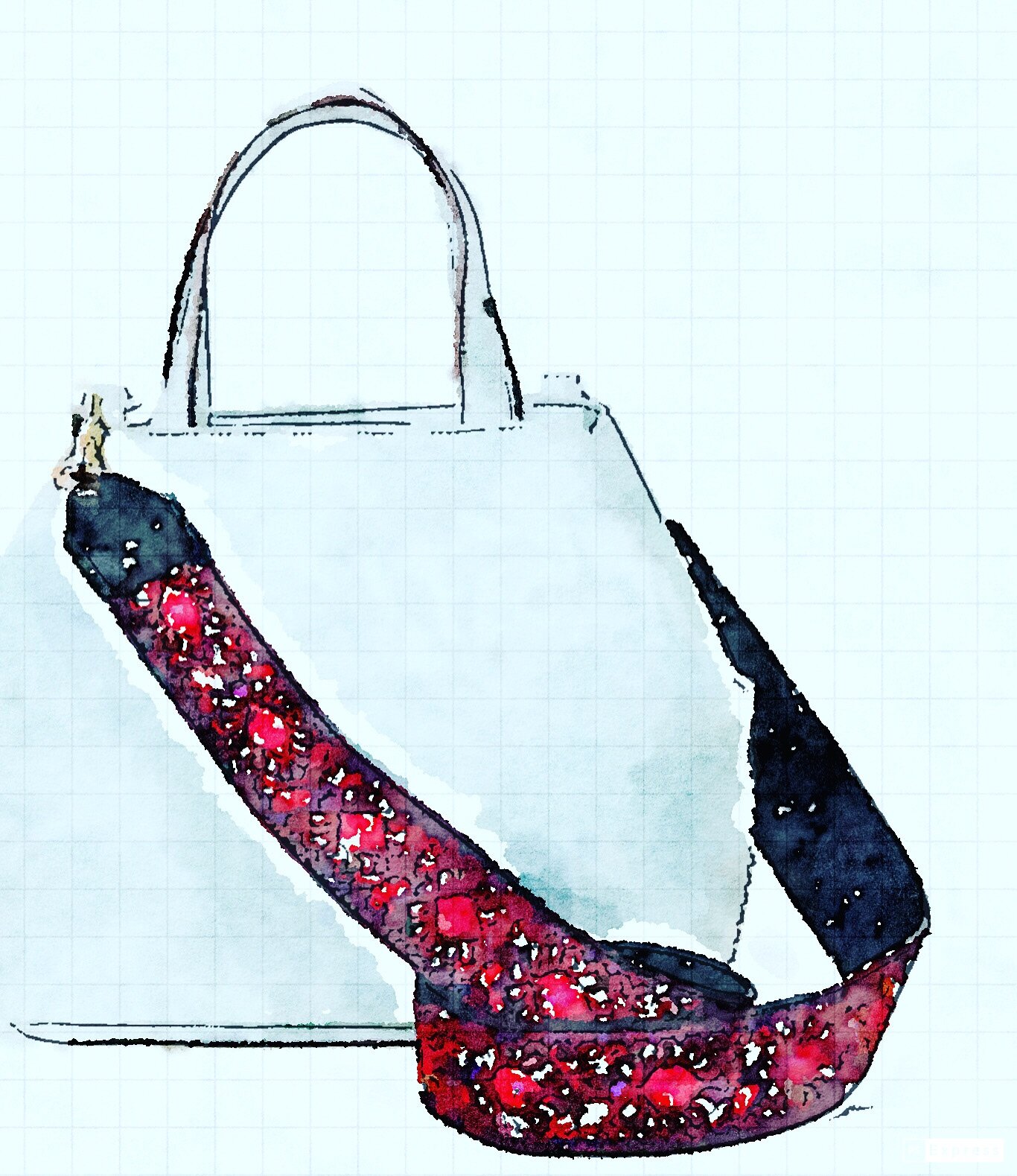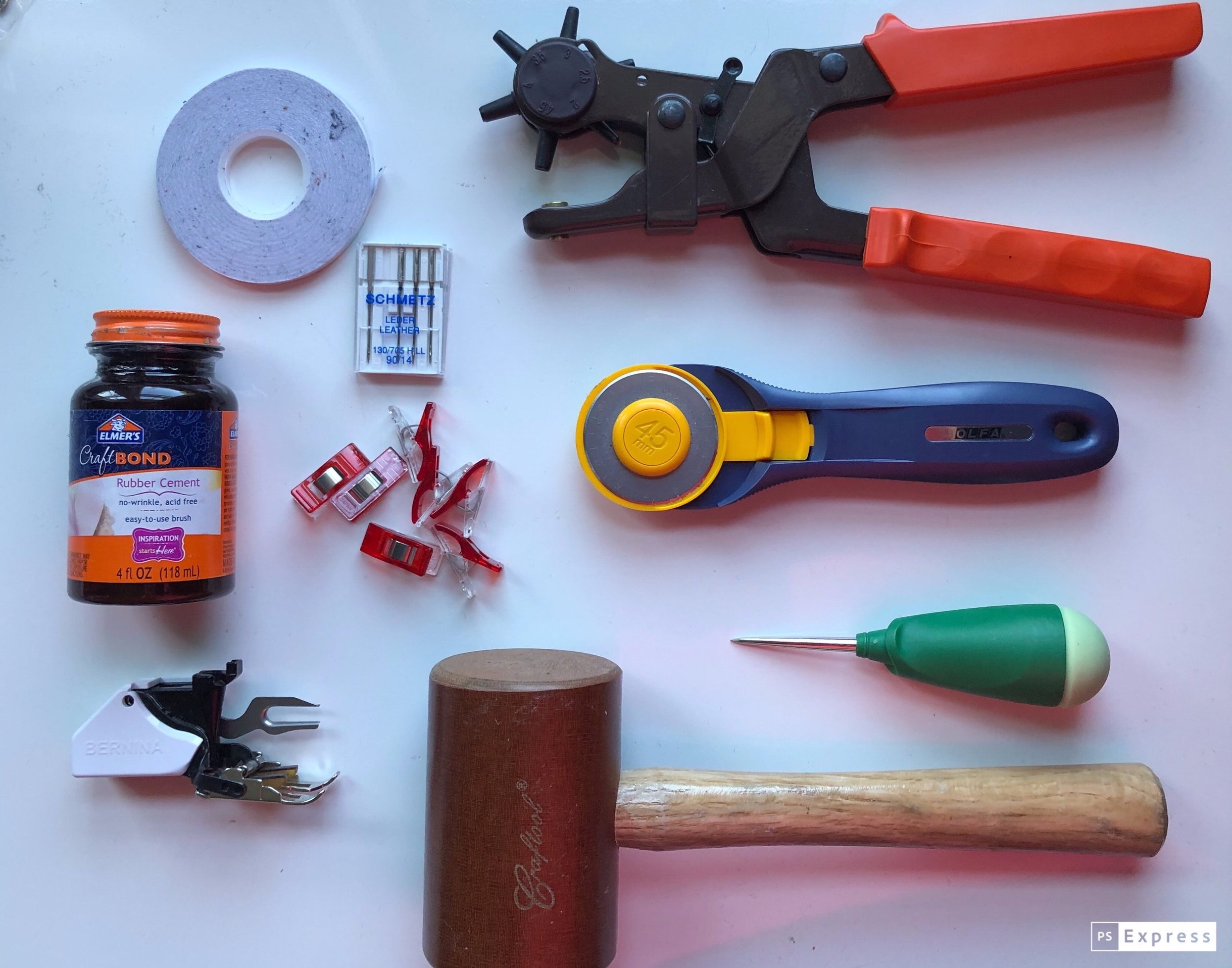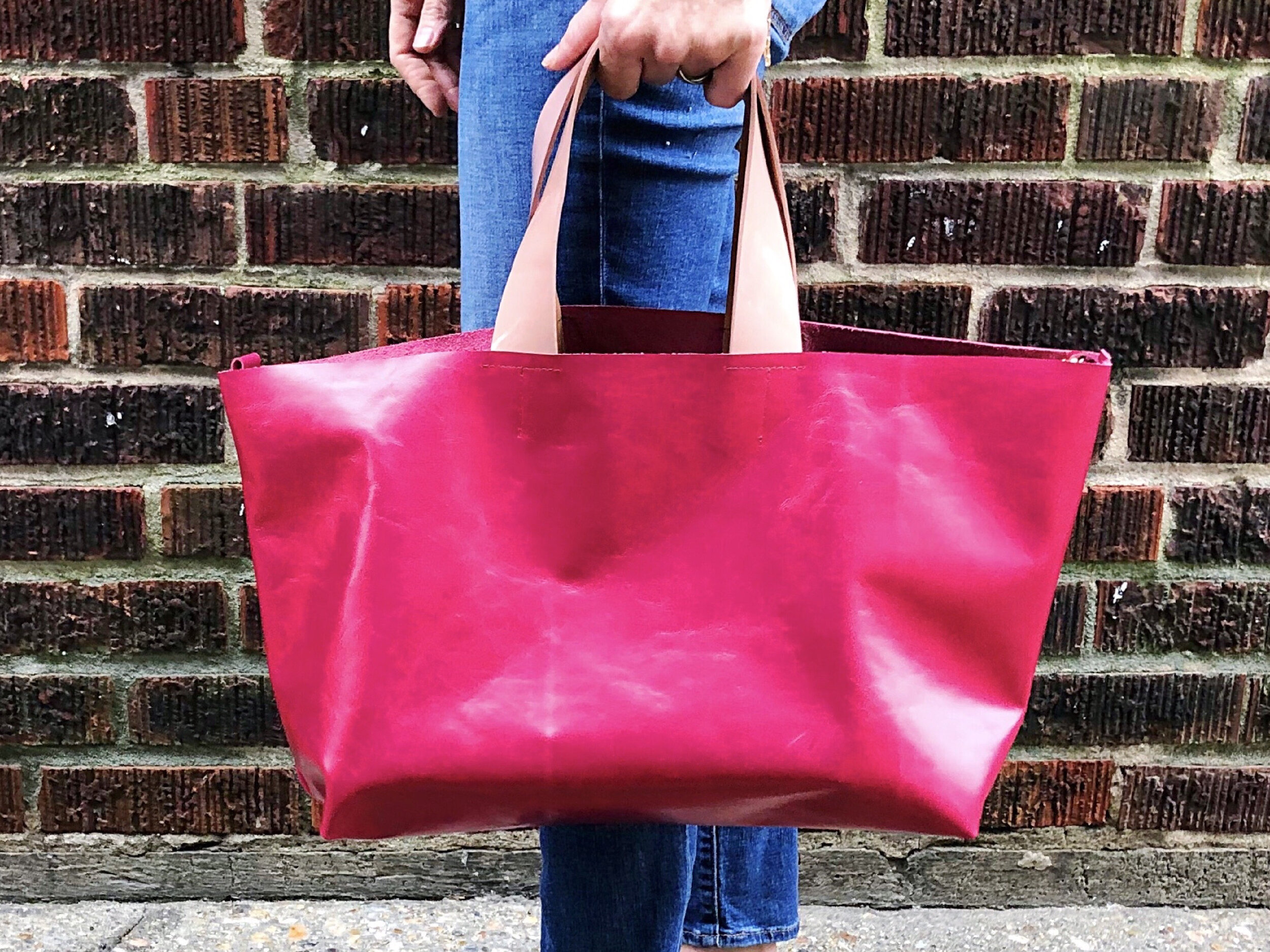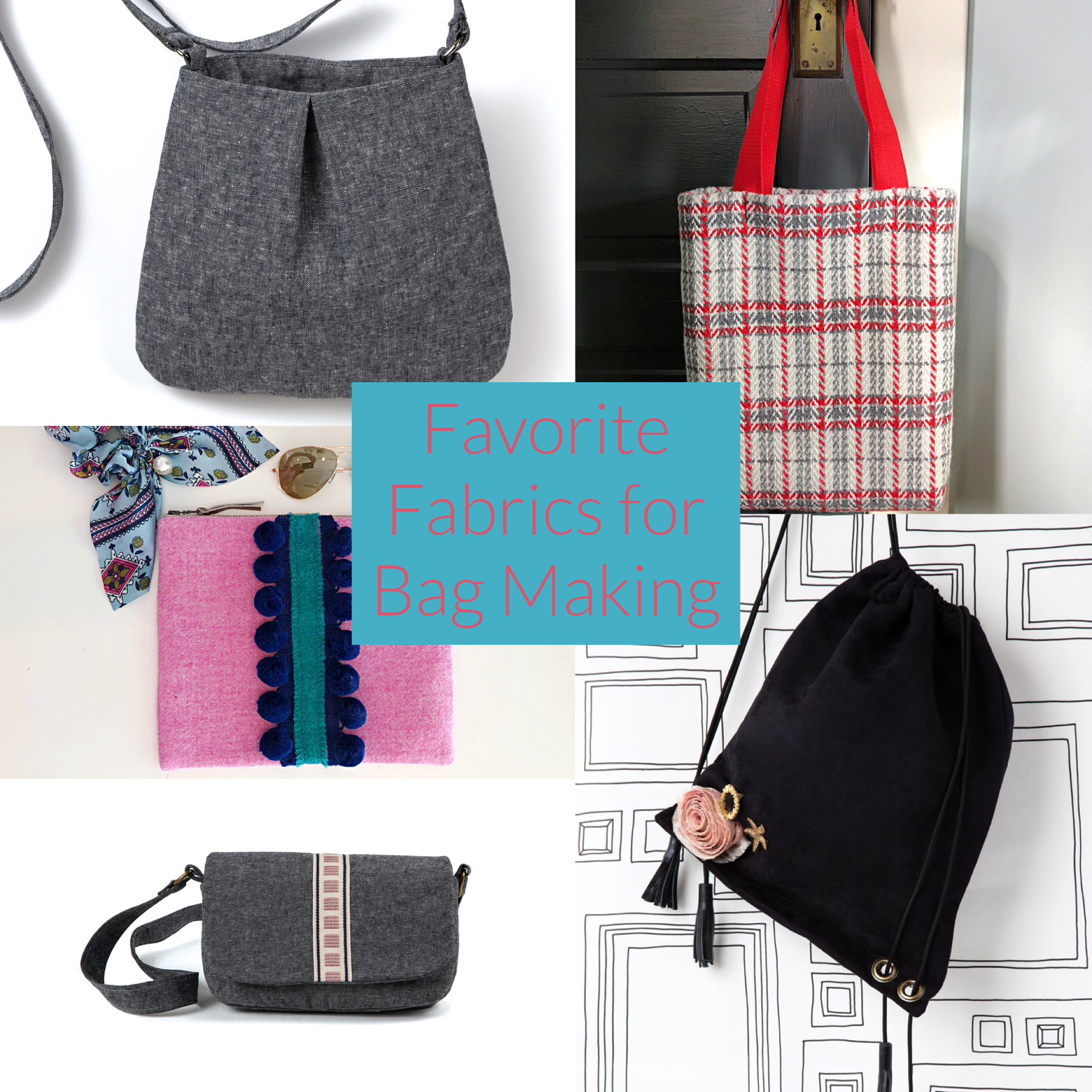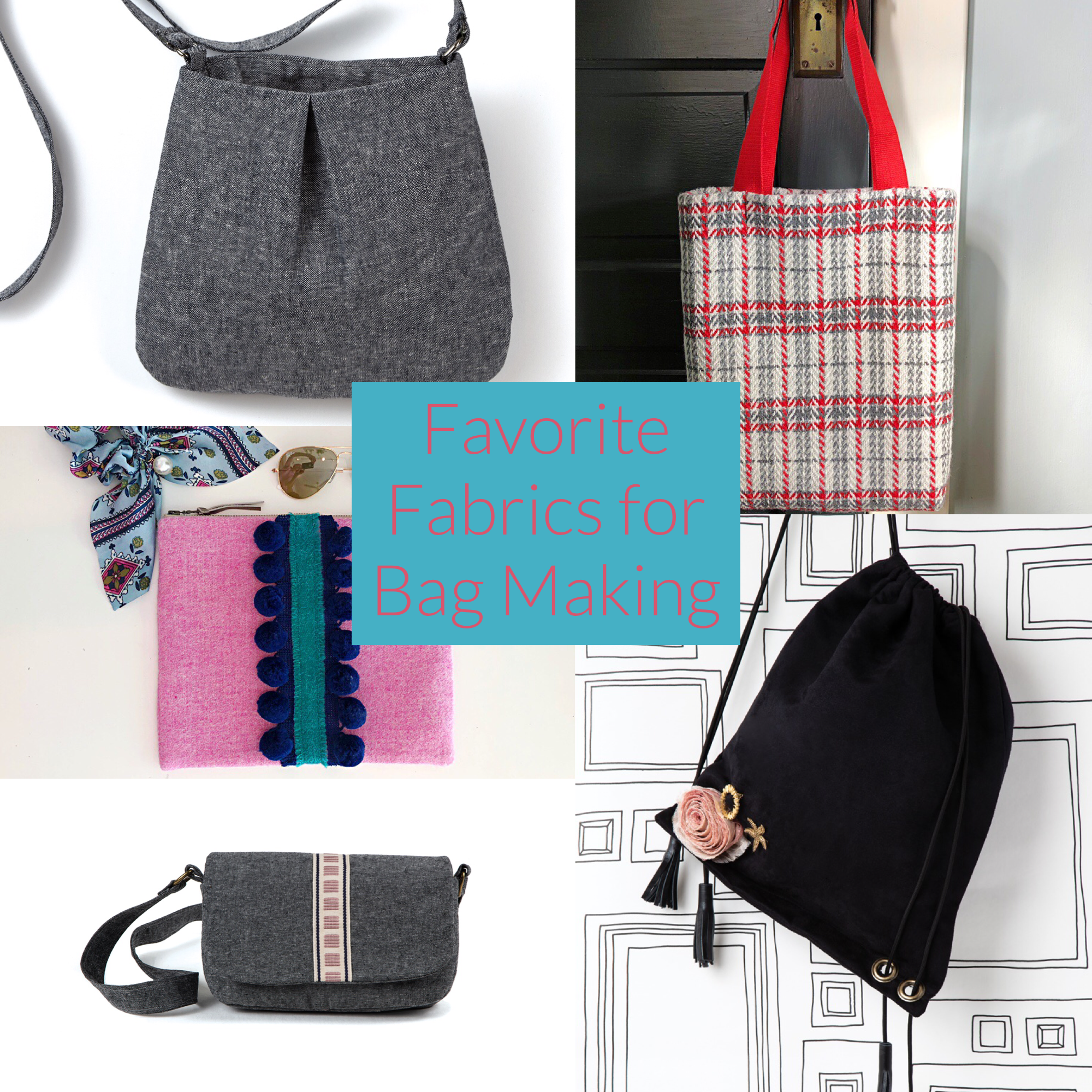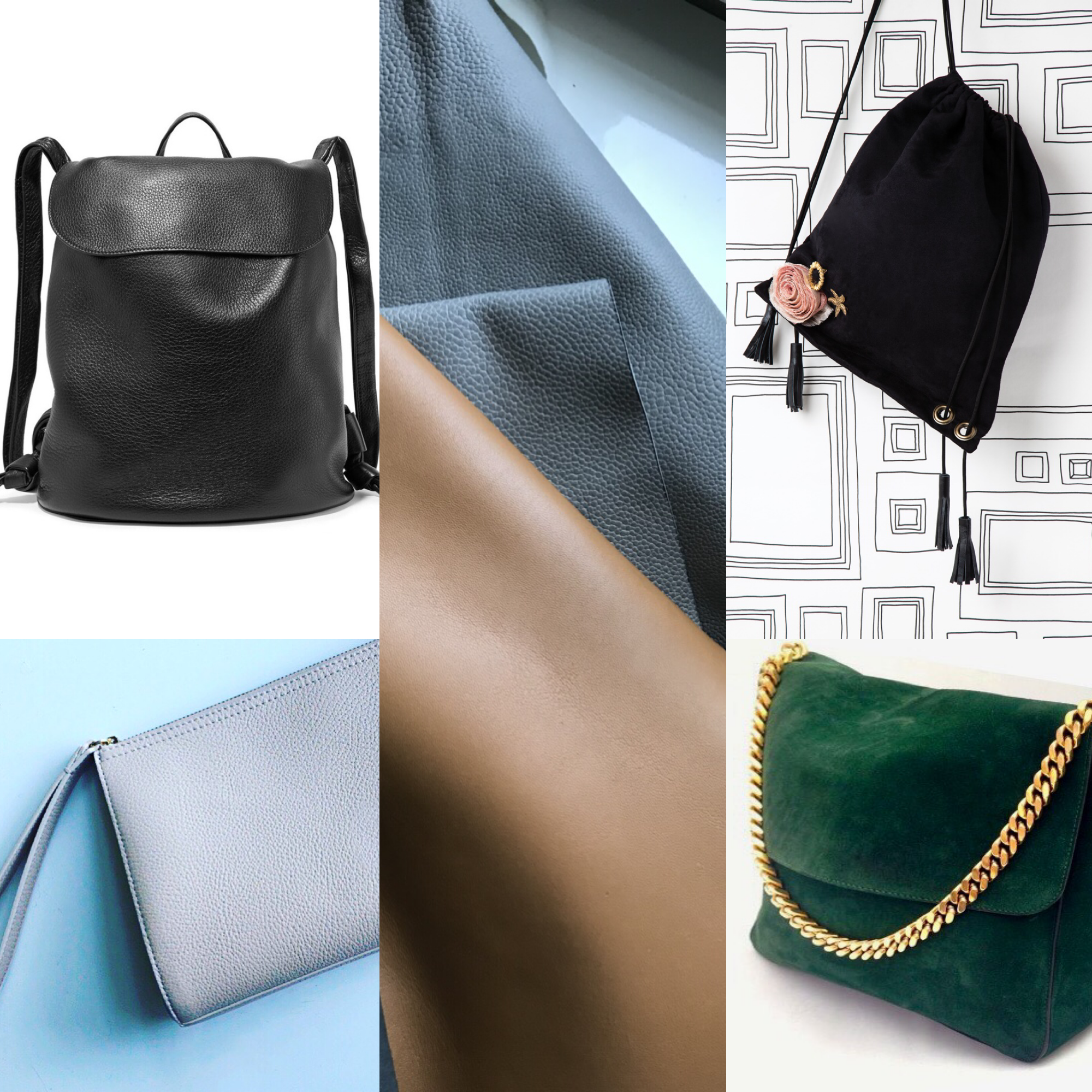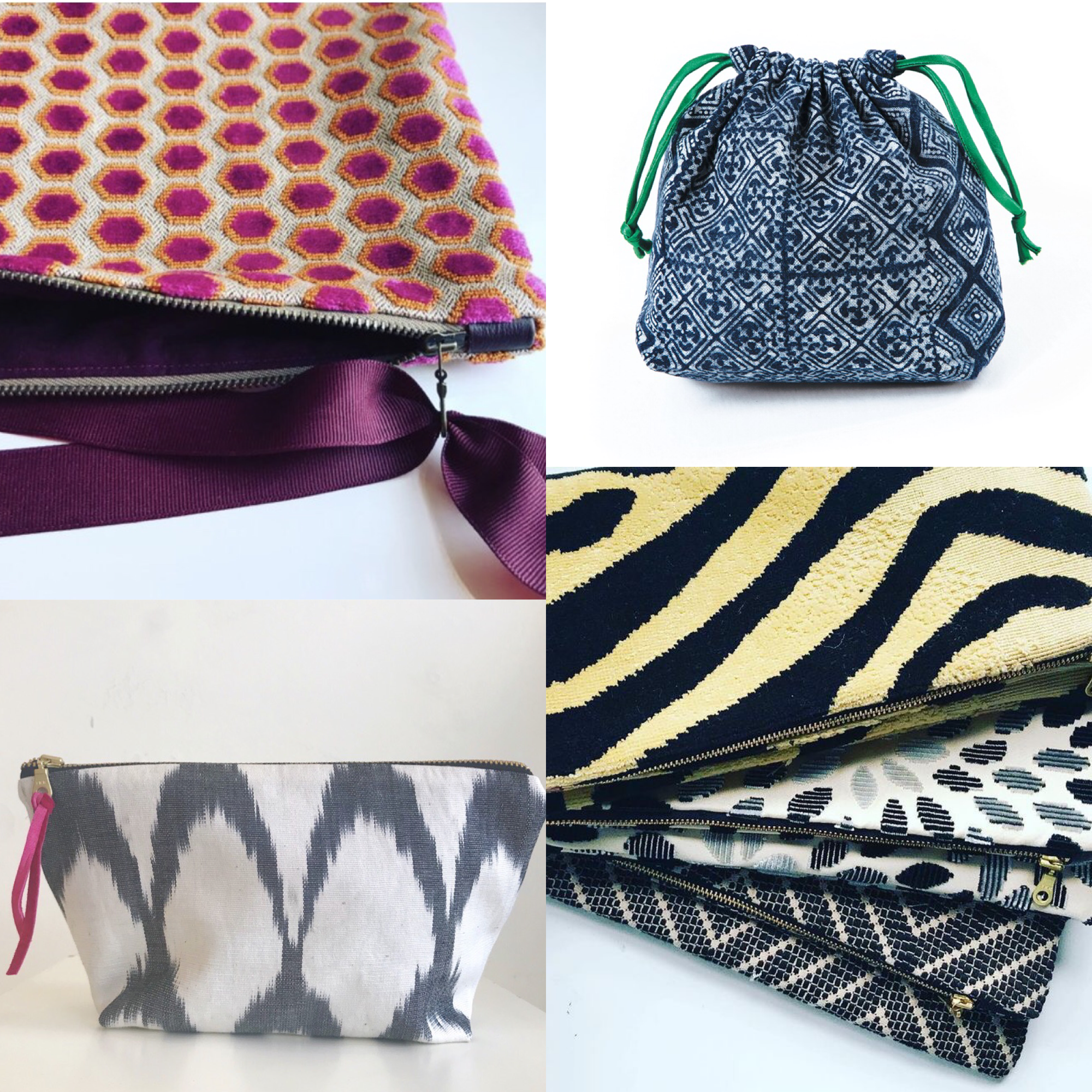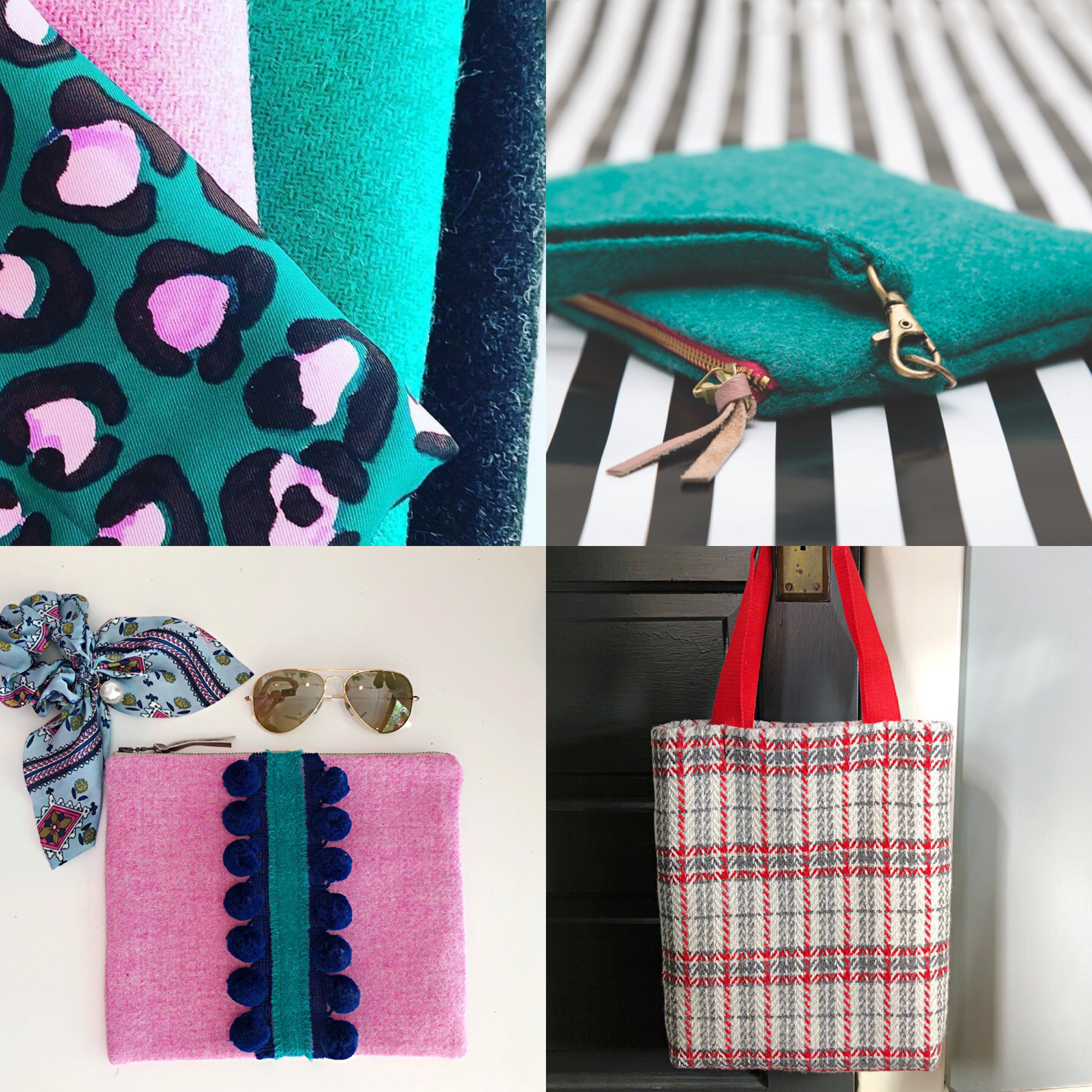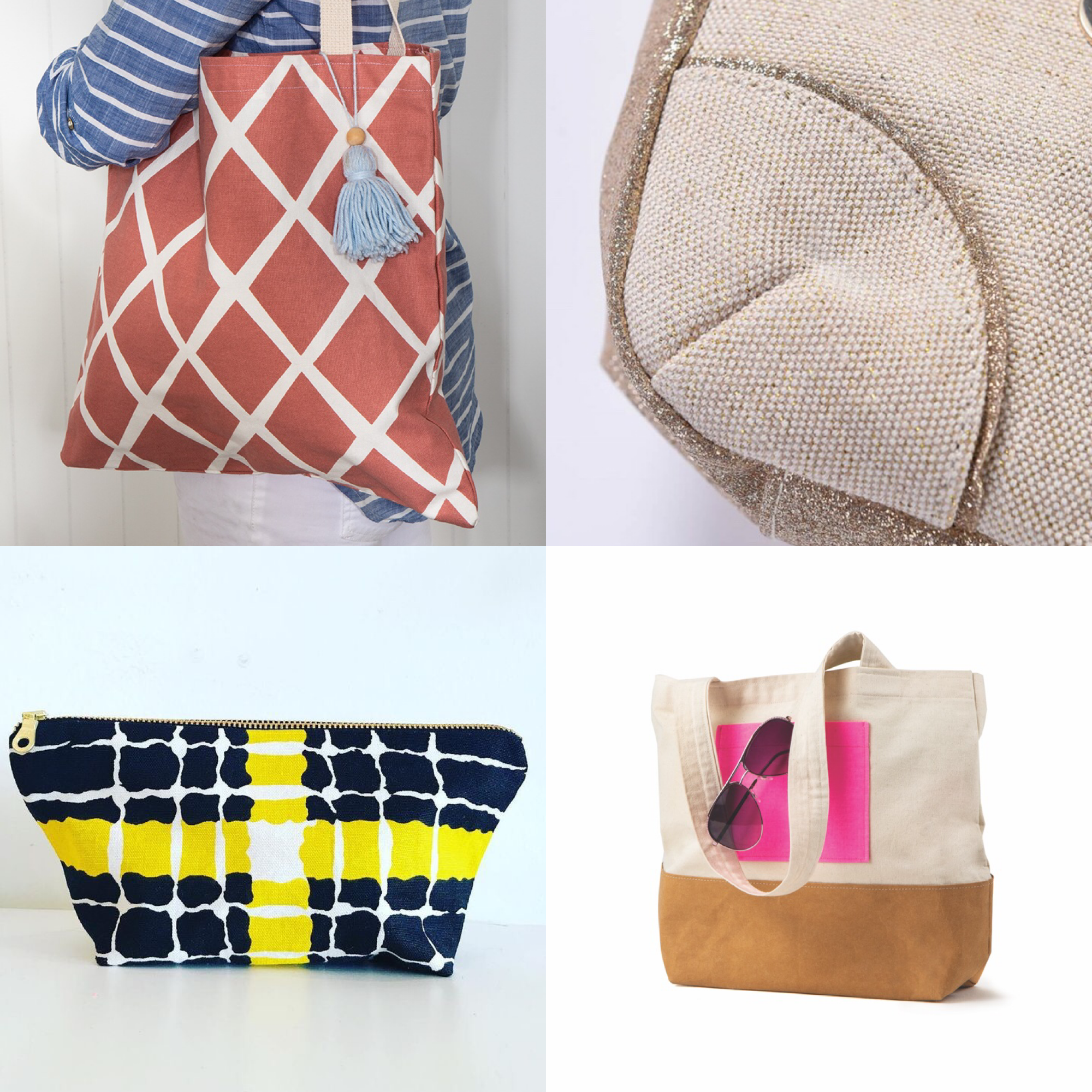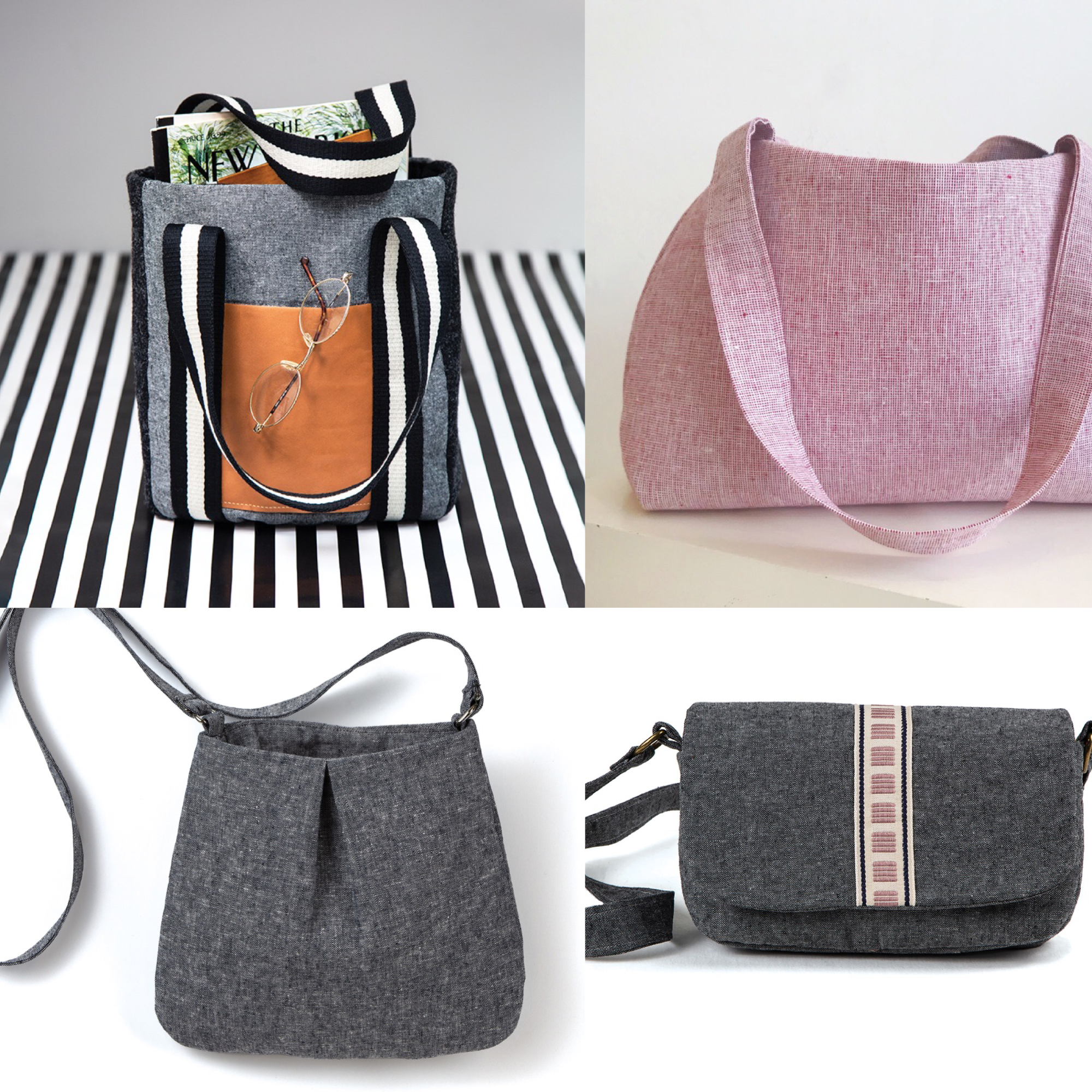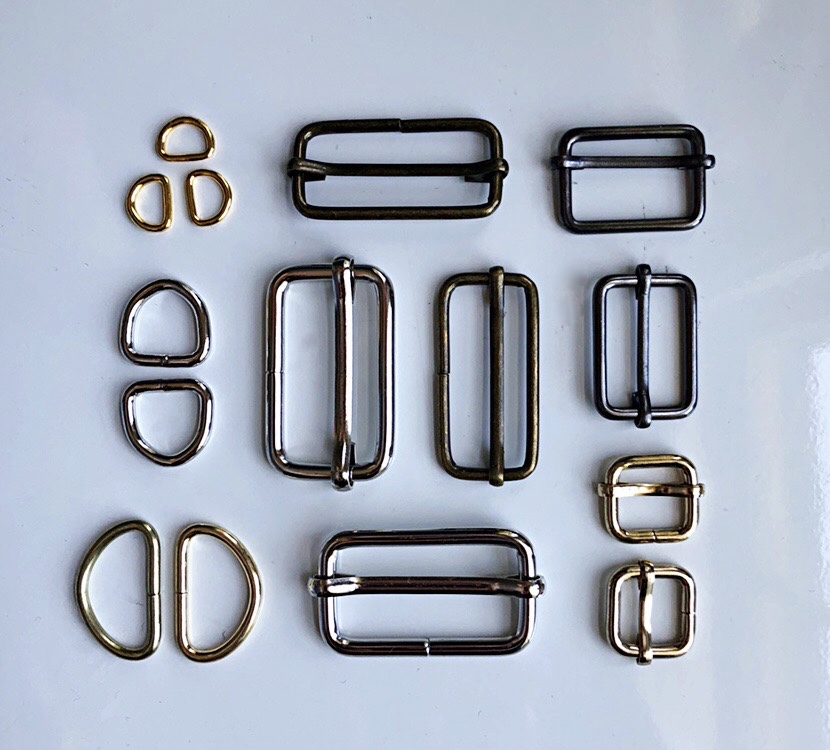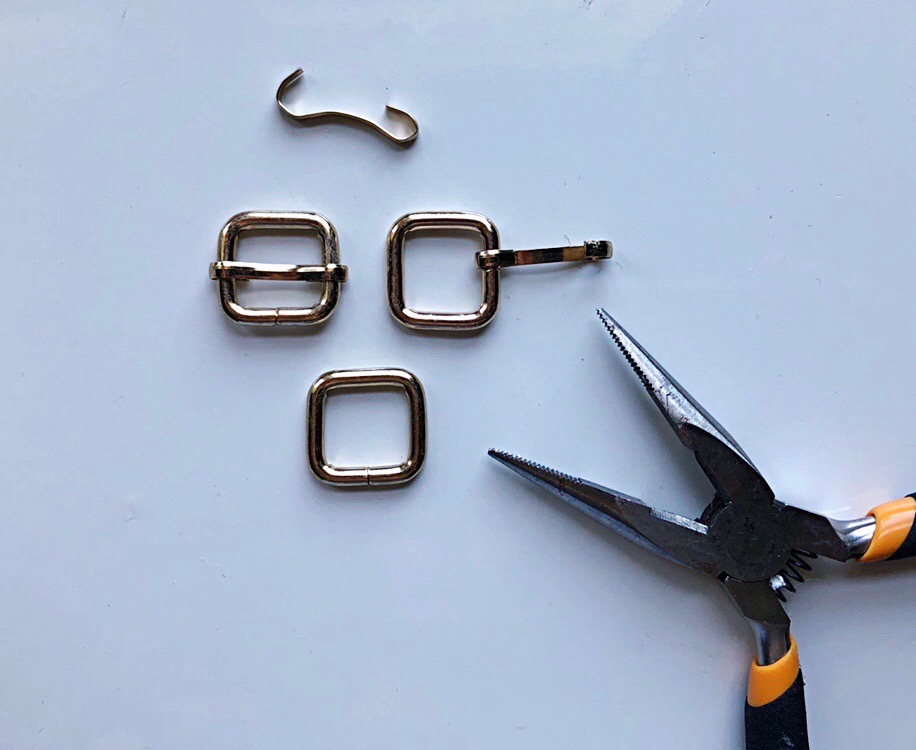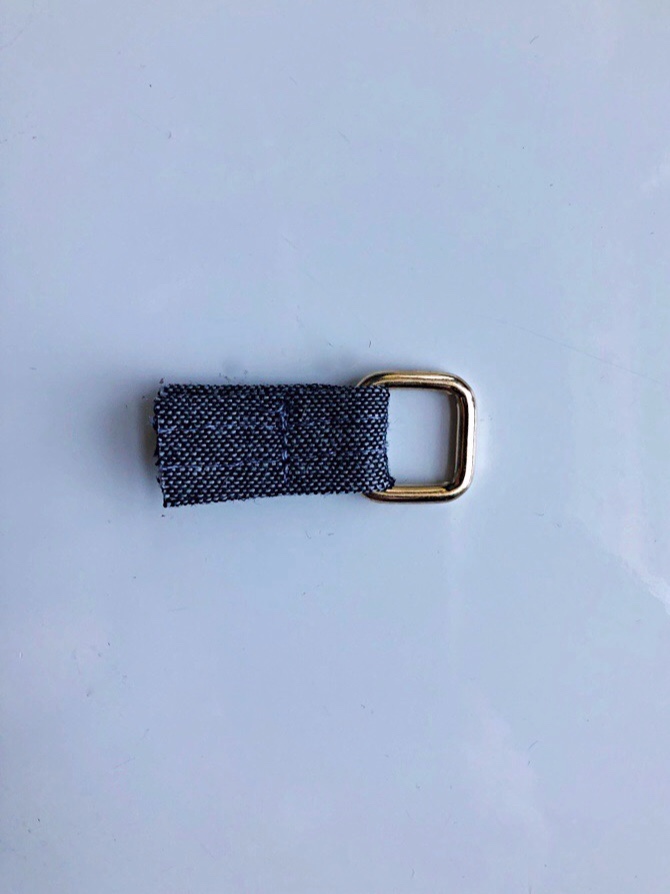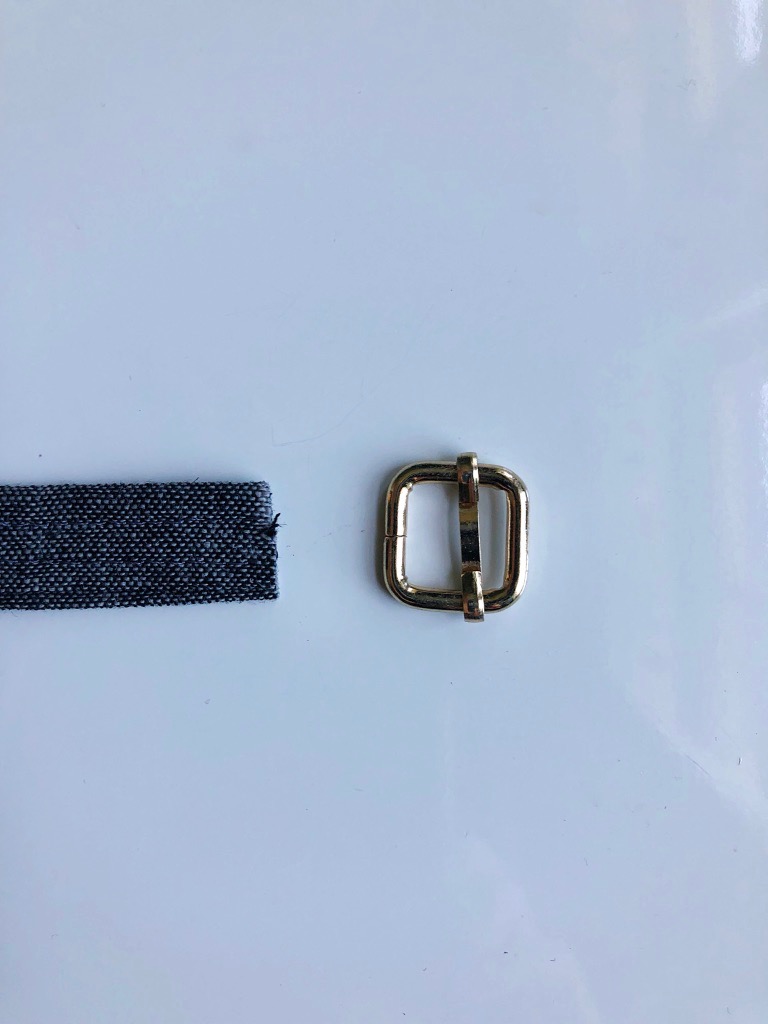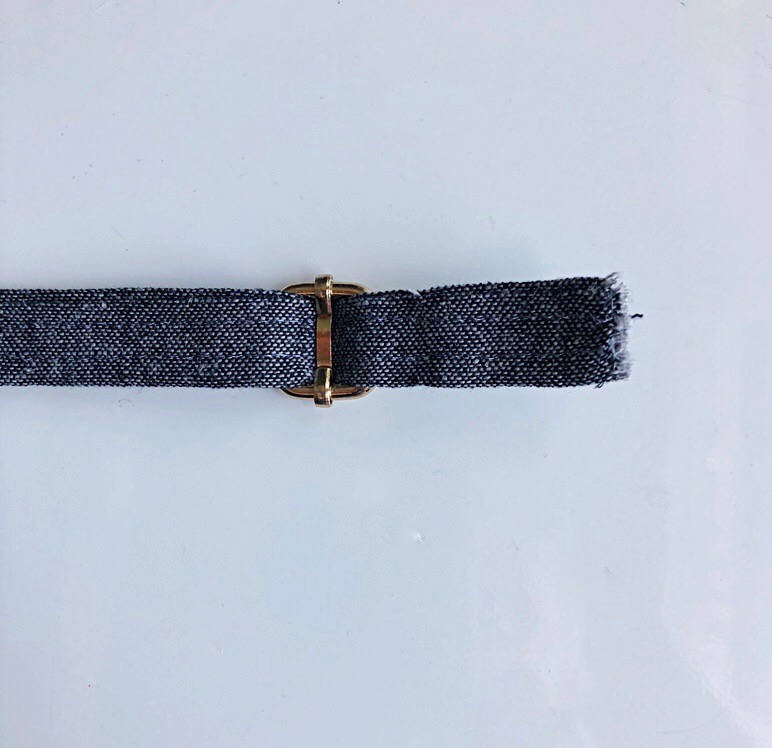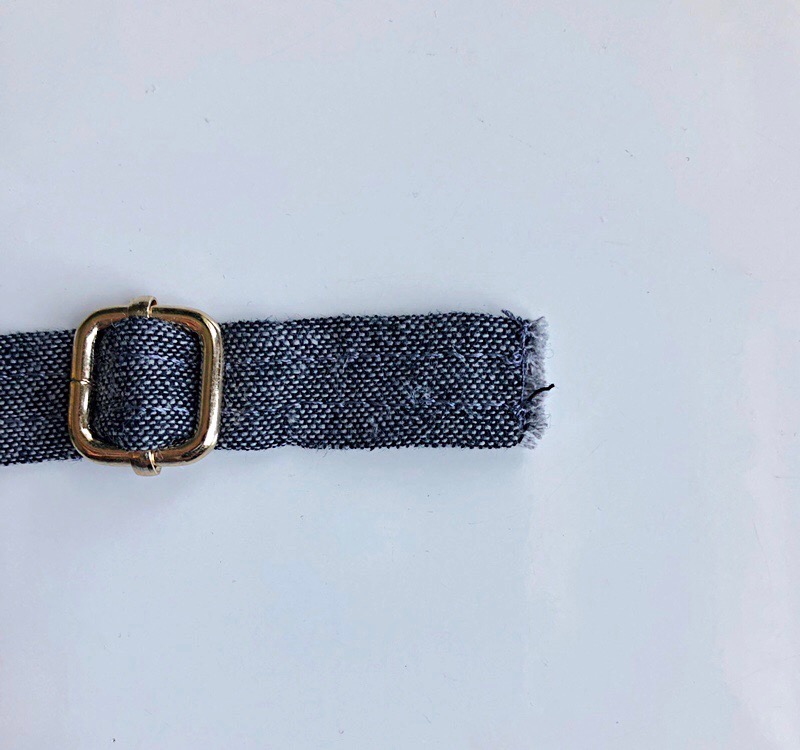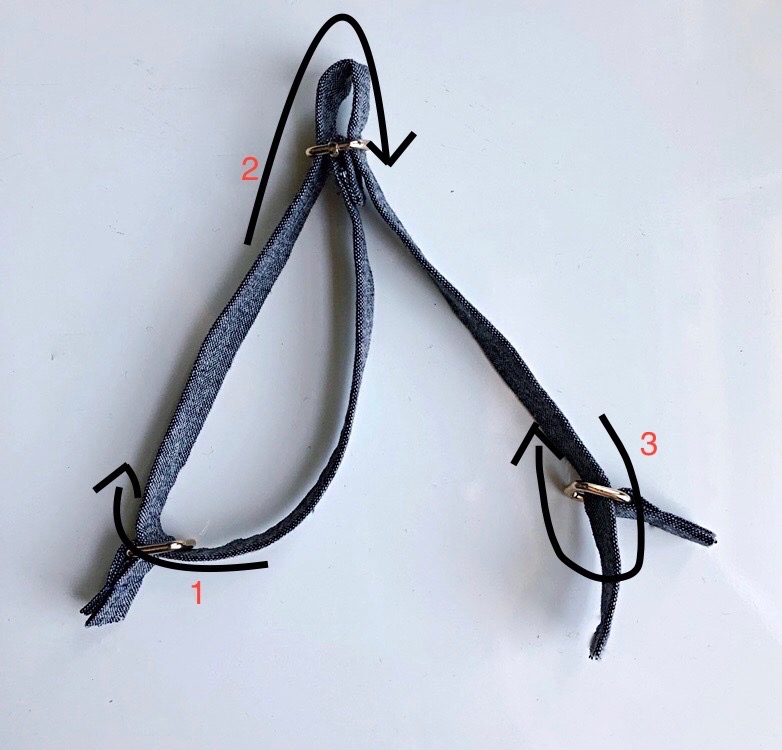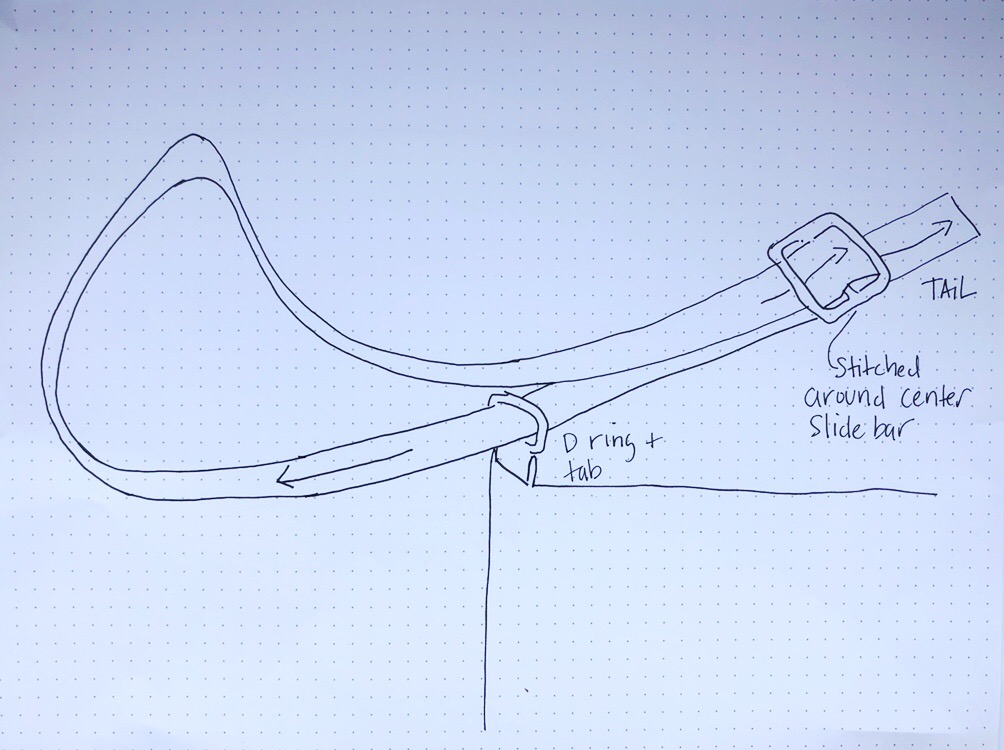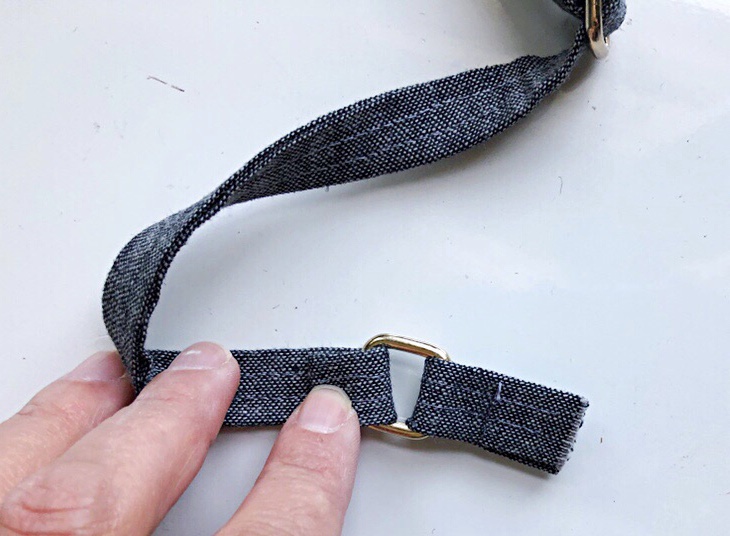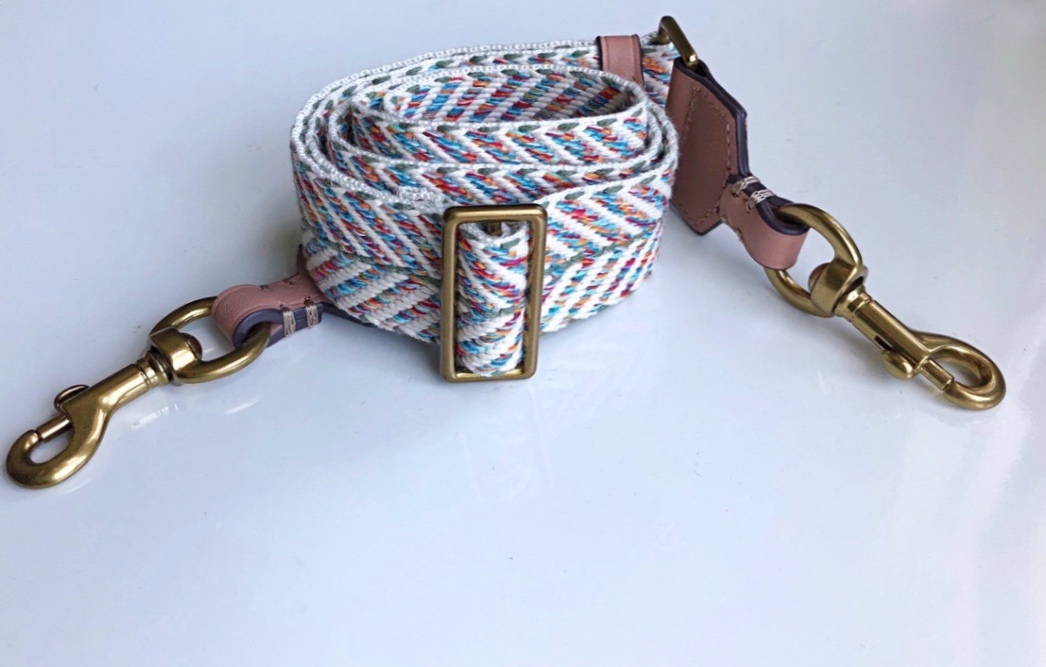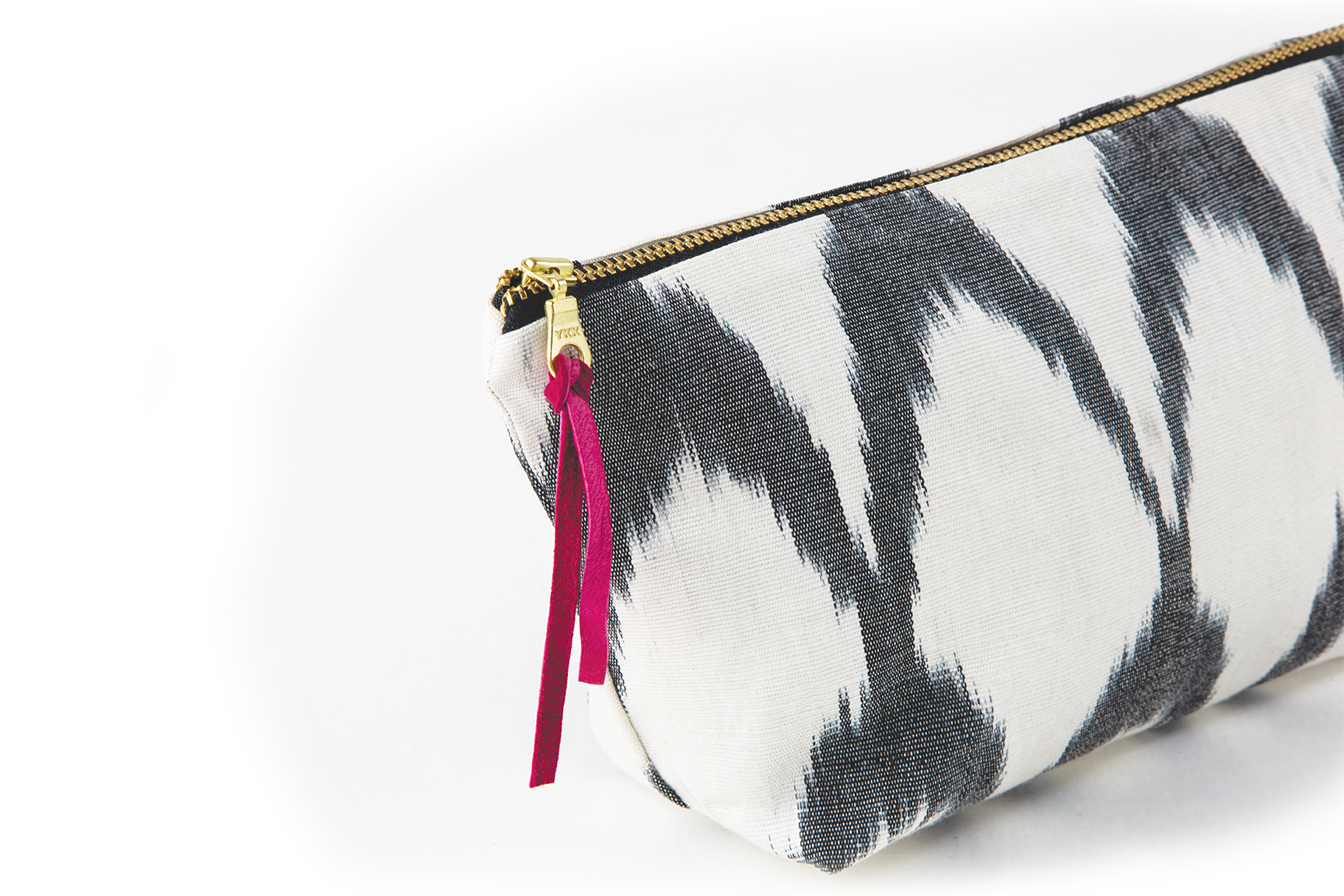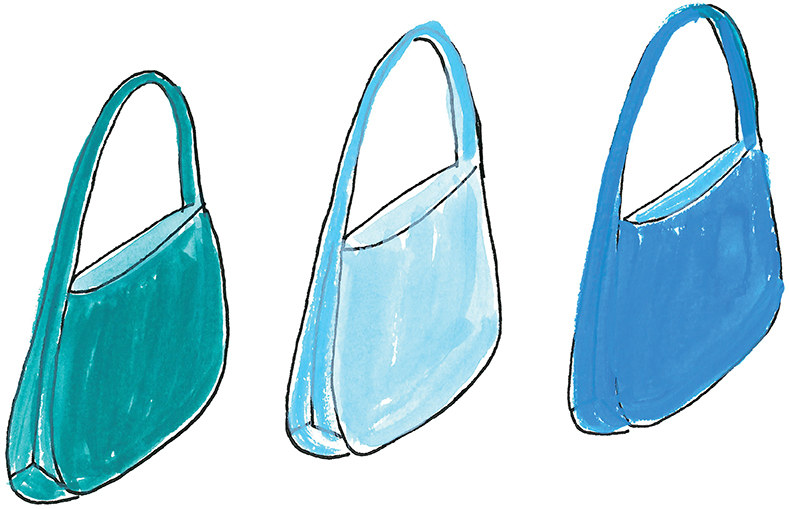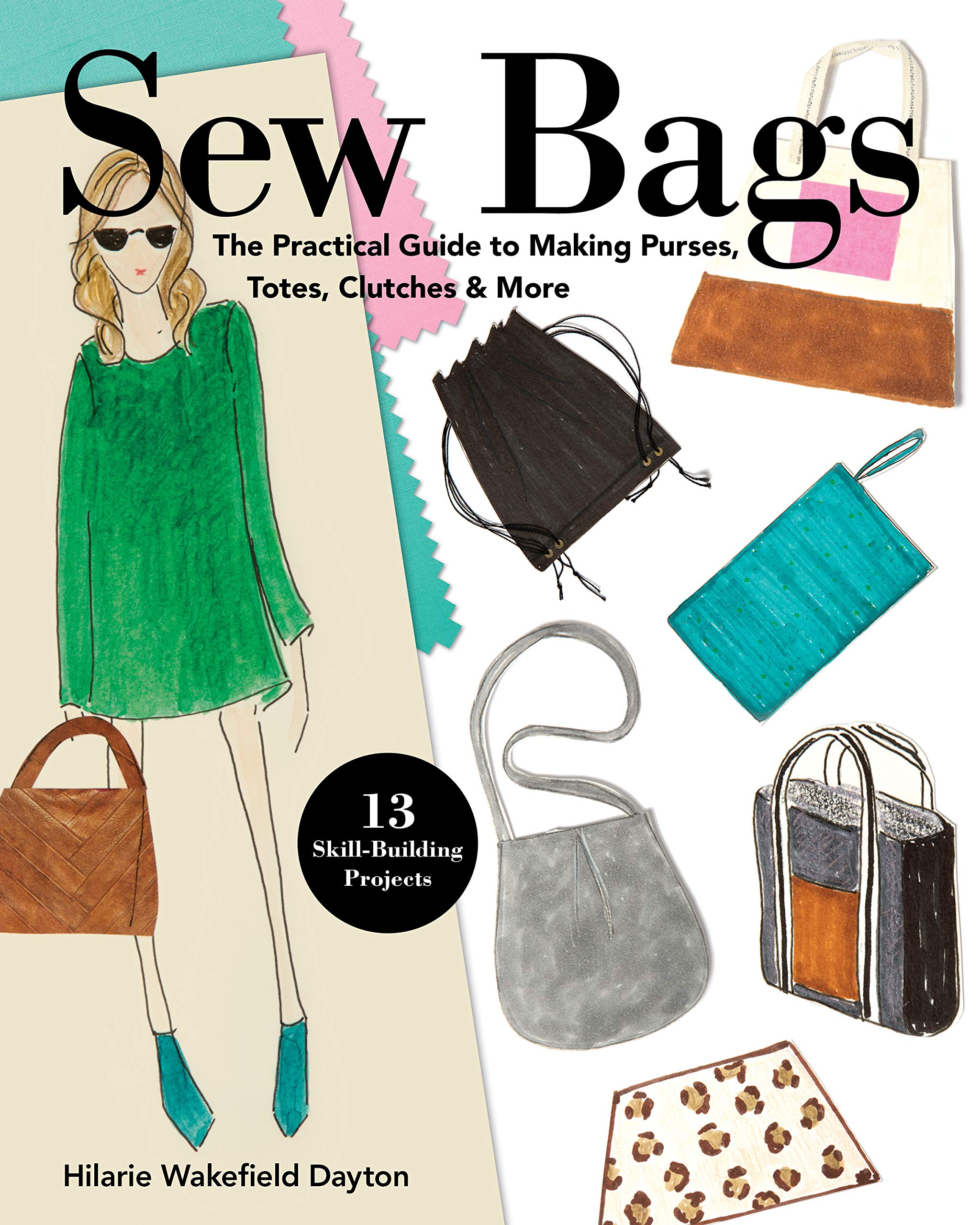New Course: Draft A Bag- Three Ways
Are you intrigued by the possibility of designing your own purse? Have you admired designer bags and purses and wished that you could make your own?
I am thrilled to launch my new bag design course with Topstitch Makers. This bag design course will help you to create beautiful purses and bags that blend style and function. Through live instruction, you will learn to draft a basic bag pattern and explore a variety of design options. From concept to construction, we will work through three classic bag styles: Clutch, Hobo and Tote. With an emphasis on detail, each lesson will present new techniques such as adding gussets, pockets, structure as well as straps and handles to further develop your skills.
Are you intrigued by the possibility of designing your own purse? Have you admired designer bags and purses and wished that you could make your own?
I am thrilled to launch my new bag design course with Topstitch Makers. This bag design course will help you to create beautiful purses and bags that blend style and function. Through live instruction, you will learn to draft a basic bag pattern and explore a variety of design options. From concept to construction, we will work through three classic bag styles: Clutch, Hobo and Tote. With an emphasis on detail, each lesson will present new techniques such as adding gussets, pockets, structure as well as straps and handles to further develop your skills.
You will have opportunities to get help, ask questions, post your progress and benefit from posts your instructor will write that are tailored to the skills you will be learning. This will take place in a dedicated bag design course activity feed.
Patterns and instruction will be included with the course series.
The sewing sessions will take place over zoom in a professional studio with multiple camera views.
The live sewing sessions will be recorded for you to return to at your convenience.
Students who register also receive a copy of my book Sew Bags.
Topstitch Makers brings together garment sewists to improve their sewing skills, gather in one unique place, to support and learn from each other, so they can reach their sewing goals. Members can attend a variety of live, online sewcial sessions, talks with community leaders and attend instructor guided sewalongs, workshops and courses. It is $4.99 per month to join the community membership and $29 per month to join the community + attend live sewalongs but there's one month free trial, so you can just check it out and come take my course for the course price of $195.
The dates are:
Sunday, July 11, 2-3pm EST Welcome Session
Sunday, July 18, 2-4pm EST Sewing the Clutch
Sunday, July 25, 2-4pm EST Sewing the Hobo
Sunday, Aug 1, 2-4pm EST Sewing the Tote
To learn more and register, visit https://www.topstitchmakers.com.
A Guide to Sourcing the Finest Bag Making Materials: Leather and Wool Felt
It’s hard for me to think about designing bags and not consider fabric as one of their defining features. There is color, shape, pattern and hardware, of course, but then, it’s the fabric. I am using the term fabric loosely as some of the textiles used to make the finest bags aren’t actually fabric at all. Leather and Wool Felt are two that come to mind. Both are natural resources, of course and offer exceptional durability, color fastness and a sculptural quality that fabric can’t really match.
It’s hard for me to think about designing bags and not consider fabric as one of their defining features. There is color, shape, pattern and hardware, of course, but then, it’s the fabric. I am using the term fabric loosely as some of the textiles used to make the finest bags aren’t actually fabric at all. Leather and Wool Felt are two that come to mind. Both are natural resources, of course and offer exceptional durability, color fastness and a sculptural quality that fabric can’t really match.
These materials are sumptuous on their own but in combination, they are a tactile delight. If you want to take your bags up a notch, you will want to try sewing with leather and wool felt.
Shopping for Bag Making Materials: Leather and Wool Felt
Leather
Before purchasing leather for sewing a bag or garment, it is always good to know a bit about how it is sold. This will help you to better select a leather that will work with you and your sewing machine.
Leather is measured in terms of ounces which refers to liner thickness rather than weight. One- ounce of leather, equals 1/64 of an inch thickness. This means with a weight of 7 to 8 ounces, the leather is about 7/64 to 8/64 of an inch thick.
1 oz. is about .4 mm thick
2 oz. is about .8 mm thick
3 oz. is about 1.2 mm thick, etc.
Leather comes from animals and like humans, each one is unique. So is our skin. Some have beautiful flawless skin, while others have lived life to its fullest and have the scars to prove it. During the splitting and tanning process, the variations in the thickness and character of the individual hide are revealed. To account for the variation, leathers are generally sold in a range of thickness, such as 2 to 3 ounces or 4 to 5 ounces.
Lighter weight leathers, up to about 4 ounces can be sewn on a domestic sewing machine. Anything heavier it is really best to use an industrial machine or even punch and hand stitch. More Tips and Tricks for Sewing with Leather here:
This chart by Tandy Leather can help guide you to selecting the ideal type and weight of leather for your next project.
These are some of my favorite sources for purchasing leather.
Leather, Suede, Skins is my go-to source for leather. Call and ask for Faina. She is exceptionally knowledgeable and will guide you to finding the ideal leather for your project.
Mood Fabrics Mood has a small but very fashionable selection of garment weight leather and trim.
Tandy Leather The granddaddy of all things leather. The website is full of great educational links and tutorials as well as a dizzying selection of hardware, paint, tools and accessories.
Don’t forget all of the leather that is readily available in thrift stores, ebay and in your own closet.
Wool Felt for Bag Making
Merino Wool Felt
Wool felt is gorgeous for making bags and other small accessories. Merino wool felt has a beautiful and soft feel, it is available in nearly any color imaginable, is naturally water repellant, renewable and sustainable. Merino wool felt is a non-woven textile that is produced by densely matting fine wool fibers. As such, it does not fray or unravel and has no wrong side and doesn’t pill. Bags made of felt are able to withstand weight without losing their shape due to the inherent tensile strength or the fiber.
Wool felt is not always easy to find at your local fabric shop, but is readily available online. When shopping, look for a felt that is more of an industrial weight (2-4mm about 1/8”) and mostly wool.
When making bags, you will be working with multiple layers of felt. To help keep your seams smooth, a Walking Foot and clips are essential. Also, you will want to increase the length of your stitch. You may need to cut a test swatch and practice to determine the ideal machine settings.
Synthetic Industrial Felt
These are fairly inexpensive options that are ideal for small accessories, making bag bases, adding structure and to create bag organizers.
Are you curious to read more about The Best Fabrics for Bag Making? In this article I discuss sewing with leather, wool, decorators weight fabric and canvas.
The perfect handbag is elusive- I hope to change that by giving you the tools you need to design and make the bag of your dreams. For more about bag making, check out my blog posts under the tag “Bags” and of course, my book; Sew Bags: The Practical Guide to Making Purses, Totes, Clutches & More
XO, Hilarie
Resources for Bag Making Hardware
When people I meet tell me that they want to learn to sew, and ask for project ideas, I always suggest making a bag. Bags offer so many opportunities to build foundational skills and learn to manipulate fabric without having to worrying about fit. In fact, the very first project that I ever made was a bag! It was a yellow 70’s coarse weave fabric- very much like burlap. The strap was fashioned out of bright pink yarn and of course I had to add more than a few embellishments. While my style has changed since then, my love for accessories has only grown!
Sewing bags and fashionable accessories is still among my very favorite things to do. The time investment is rather small, and the rewards are huge. Plus, at the end of the project, you have a new bag to carry around. To begin making bags or anything really, you won’t need much more than a basic sewing kit. However, if you find you love bag making (and I hope that you do!) It may be helpful to begin adding a few more specialized tools and supplies to your stash.
Resources for Bag Making Hardware
When people that I meet tell me that they want to learn to sew, and ask for project ideas, I always suggest making a bag. Bags offer so many opportunities to build foundational skills and learn to manipulate fabric without having to worrying about fit. In fact, the very first project that I ever made was a bag! It was a yellow 70’s coarse weave fabric- very much like burlap. The strap was fashioned out of bright pink yarn and of course I had to add more than a few embellishments. While my style has changed since then, my love for accessories has only grown!
Sewing bags and fashionable accessories is still among my very favorite things to do. The time investment is rather small, and the rewards are huge. Plus, at the end of the project, you have a new bag to carry around. To begin making bags or anything really, you won’t need much more than a basic sewing kit. However, if you find you love bag making (and I hope that you do!) It may be helpful to begin adding a few more specialized tools and supplies to your stash.
Finding hardware that looks (and felt!) as good or even better than a designer bag at retail can be tricky-unless you know where to shop. Fortunately, I’ve got you covered. Here is a list of my most used hardware and the retailers that sell them.
Bag Making Hardware
Magnetic snaps come in a range of colors and sizes. They are easy to insert.
Cap rivets are used for finishing and reinforcing leather and bag details.
D-rings are D-shaped metal rings used for fastening handles to bags.
Adjustable sliders are used to thread a strap and to adjust the length.
Swivel snap hooks are used with D-rings to clip straps to a bag.
Eyelets are small round pieces of metal used for finishing and reinforcing fabric holes.
Grommets are like eyelets, only larger.
Metal Purse Frame for snap lock and structured purse openings.
Strapping and Trim
When creating your own bag, you get to select every detail. After determining the style, silhouette and function, it is time to choose the strap. Options for bag straps and handles are seemingly endless. Straps can be fashioned out of leather, fabric, webbing, chain, cord, metal and wood. Remember- you don’t have to limit yourself to one strap or handle. With the addition of hardware, swapping out a purse strap has never been easier.
Webbing Tape is a durable option for bag handles. It is commonly made of cotton, nylon or jute.
Leather strapping is generally sold by the yard in a variety of widths and is used for making purse straps, belts and other accessories.
Chain used on its own or laced with ribbon or leather cord adds instant “fancy” to a bag.
Here are some of my personal favorite stores for hardware, strapping and trim that cater to both the individual sewer as well as those in the trade.
Zippers
If the zipper selection at your local fabric store leaves you feeling rather uninspired- wait until you see these! Zippers are available in a wide range of materials, colors and lengths. They can be purchased individually or in bulk in standard lengths as well as on a continuous roll so that you can customize the length and select your slider.
Zipper Types
Zippers are classified into two types: closed-end and open. The easiest way to tell which type the zipper is by looking at the zipper stop. If the zipper can be fully opened and separated like one on a jacket, it is considered an open zipper. If the zipper cannot be separated when fully opened, it is a closed-end zipper.
Open end zippers are generally used for coats, jackets, sweaters and sweatshirts. Whereas you will see closed-end zippers on pants, jeans, skirts, shoes, pockets and bags.
Both open and close end zippers can be further grouped into the following categories, which are based on function.
· One-way open-end zippers
· Two-way open-end zippers (2 way separating zippers/dual separating zipper): including two sliders. The zipper halves can be completely detached from each other, just like the one-way open-end zippers. This type of zipper is commonly seen on heavy coats and overcoats.
· One-way close end zippers
· Two-way close-end zippers: including O shape with two bottom stops and the X shape that has two top stops. Both types have two sliders and are frequently seen on large bags and luggage.
These are some of my favorite sources to shop for all types of zippers.
And don’t forget the treasure trove of miscellaneous hardware from your own old bags and belts. They can easily be removed and updated.
The perfect handbag is elusive- I hope to change that by giving you the tools you need to design and make the bag of your dreams. For more about bag making, check out my book; Sew Bags: The Practical Guide to Making Purses, Totes, Clutches & More
Happy Holidays!
XO, Hilarie
How to make a detachable shoulder strap for your bag
You have seen the new guitar type purse straps, right? While they weren’t really on my radar until early this year when I read an article in the NY Times. Since then, I haven’t been able to get this detachable strap out of my mind. I began to imagine the countless options and reinterpretations. Suddenly it seemed as if each bag I own needed to have its own wardrobe. And now, they do.
By now you have surely seen the new guitar type purse straps, right? They weren’t really on my radar until early this year when I read an article in the NY Times. Since then, I haven’t been able to get this detachable strap out of my mind. Suddenly it seemed as if each bag I own needed to have its own wardrobe. ( And now, they do. ) I began to imagine the countless options and reinterpretations.
I love the fun of dressing up a bag with a different strap, and watching the transformation. These shoulder straps allows you to instantly add a personal touch to your bag. The first bag that I tried to pair it with was a crossbody style. The new contrasting strap made it so much more fun and interesting. Then I tried it with a belt bag- now that “belt” bag has three different options. It can be worn on the belt, with a crossbody strap and now, it has a new leather top handle. Same bag, three carrying options. Friends, isn’t that reason enough to pull out your sewing machine?
Today I am going to share with you at a shoulder strap tutorial so that you too can make a detachable shoulder strap that speaks to you, fits you and stands apart from the rest of your bag.
The Ultimate Hook-up: Make a detachable shoulder strap for your bag
HOW TO SEW A DETACHABLE PURSE STRAP
MATERIALS AND SUPPLIES
Sewing Machine with a walking foot
Leather scraps, (8 inch square should be enough)
Two 3/8” x 1 1/2” Swivel Snap Hook for the rounded cap; Two 1 1/2” x 1 3/4” for the squared off version.
1 1/4 Yards of Cotton Webbing Mine is 38mm (roughly 1.5”) wide and 44” long
Mid-weight polyester thread to match leather
Scissors or Rotary cutter
Rubber Cement
Chalk or water soluble fabric marking pen
SIZE
Finished dimensions are approximately: 2”x 47”
NOTES
See previous blog posts on sewing with leather, determining the best strap length and using an adjustable slider .
The leather used in this tutorial is from Leather, Suede, Skins, Inc. in NYC
For best results when sewing with leather, the stitch length should be set to about 7-10 stitches per inch depending on the thickness of the leather. Stitches that are too short make too many holes in the leather which decreases stability.
You can adjust the length of the stitch by testing on a scrap of leather. Does the leather feed evenly? Are there any skipped stitches? How is the tension? Are both the top and bottom threads flat and even?
PATTERN INSTRUCTIONS
Please read through the entire pattern before beginning your bag.
THE PATTERN
If you haven’t used a PDF Pattern before, here is a quick tutorial on printing and assembly: PDF Pattern
For more information on working with patterns, see pages 14-18 in my book, Sew Bags: The Practical
Guide to Making Purses, Totes, Clutches & More; 13 Skill-Building Projects C&T Publishing, 2019
PREPARE
There are two end cap styles to choose from. Please be sure that you select the appropriate sized hardware and webbing to fit. For this tutorial, I am using the more rounded off shape to cap my strap.
Trace the End Cap pattern onto the back side of the leather piece. Repeat for the second piece.
CUT
Carefully cut around the traced line.
Measure and cut the webbing to your desired length. Here is a recent article that may help guide you- or you can just measure a strap that you already own and that fits comfortably.
HARDWARE
Slide the leather piece into the bottom ring of the snap hook. I find it is easier to fold the leather in half, lengthwise (like a hotdog) and thread it through the ring. Once it is centered, unfold and flatten.
In a well- ventilated area, apply a generous glop of rubber cement to the center of the inside of the leather. Let it sit a moment to get tacky. Place the end of the webbed strap centered on the leather- making sure that the webbing is completely inside the leather. Press to help the rubber cement to adhere.
Add another bit of rubber cement to the top of the strap and press the leather to seal. Allow to dry for a few minutes.
Repeat for the opposite side of the strap end.
MARK
Take a piece of chalk or a water soluble pen and mark the stitching line on the outside of the leather.
SEW
Edgestitch around the end cap. You will be sewing a box that is about one and a half inches square. If you would prefer, feel free to round out your stitching instead (like I did) by just sewing 1/4” from the edge of the leather. It is easier to sew a box shape and get it right the first time. Whichever shape you choose, just try to sew slowly. You can even “walk” your machine if you need to.
TRIM THREADS
Instead of back stitching, I generally recommend leaving long tails and hand knotting the ends, as backstitching can cut the leather. To hide the tails, tie in a double knot as close to the stitch as possible. Thread both ends of the thread onto a hand sewing needle. Insert the needle into the back of the strap of the underside of the seam. Pull through. Tie once again and snip.
Pictures of this method and more details are available here.
I added a rivet to this strap to both dress it up and to provide some additional reinforcement.
My next strap is all laid out and ready to go!
This accessory strap can be used with any bag that has a removable strap. Simply unhook the original, and swap it out for the new and improved.
With this fully customized option, you can breathe new life into old bags. Whether you wear it messenger or standard shoulder style, it is sure to give each outfit some unique style appeal. How will you wear yours? Please share using the hashtags #sewbags #sewbagsthebook #littlestitchstudio
For more bag patterns and sewing techniques, be sure to check out my new book! Sew Bags: The Practical Guide to Making Purses, Totes, Clutches & More; 13 Skill-Building Projects
XOXO, Hilarie
Tips and Tricks for Sewing with leather
There is just nothing like sewing or crafting with beautiful materials. Chief among them for me is leather.
One of the reasons that I was late to release a pattern that requires leather is that for many people, it is tricky to acquire. It is not like you can stop by your local fabric shop and pick up a yard or two. Additionally, while leather is not difficult to sew, you do have to have a few extras available to make it turn out looking fantastic.
There is just nothing like sewing or crafting with beautiful materials. Chief among them for me is leather.
One of the reasons that I was late to release a pattern that requires leather is that for many people, it is tricky to acquire. It is not like you can stop by your local fabric shop and pick up a yard or two. Additionally, while leather is not difficult to sew, you do have to have a few extras available to make it turn out looking fantastic. When I wrote my book, one thing that I really wanted to stress was to not feel the urge to go out and purchase everything that you think you “might” need. As it never really ends- I promise! 45 years in and each time I learn a new technique or take interest in some new esoteric path, the cash flow woes begin! Which brings me back to the point, “Do as I say, not as I do” :)
Life is funny sometimes! Through complete serendipity, and the power of Instagram, I have made a new friend, Faina, who happens to own a leather shop! Leather, Suede, Skins, Inc. in NYC. She so generously shared some of her gorgeous leather with me to make the Poppy Convertible Tote and tutorial. But more than that, you now have a place to shop for leather and an expert to consult! Our hope is that together, we can show you how easy and fun it is to sew with leather.
There are a few supplies that you will need to get started. While some are truly necessary to achieve the correct finished look and make the process so much more enjoyable! There are a few others that are more in the “nice to have” category. I’ll share both with you.
MY FAVORITE LEATHER SEWING TOOLS
Walking Foot, or Even-Feed Foot Don’t be intimidated- the walking foot is your friend! This genius device will evenly feed multiple layers of fabric or leather through your machine. No shifting, dragging or puckering.
Silk or Polyester Thread- this is my favorite Additonally, topstitching thread or denim thread works too. Be sure that it is medium weight and made of silk or polyester. Cotton thread will fray and deteriorate over time due to the chemical reaction to the tannins in the leather.
Double Sided Tape Double-sided leather tape comes can hold layers of leather together for stitching and can also be used to hold seams flat. Please remember to test on scrap leather before trying on your project.
Wonder Clips (Medium sized binder clips work too.) Unlike fabric, pinning leather will leave holes. Instead try using clips.
Microtex or leather Sewing Machine Needles These needles have a special shape and point which is designed to pierce leather with little resistance.
Mallet A rubber or bakelite mallet is used to lightly tap seams in order to flatten them.
Rubber Cement Rubber cement works well for gluing seams flat.
Straight Awl My go-to tool to punch holes or enlarge existing holes in canvas and leather.
Rotary Cutter- This smaller one is great for detail work and the larger size can go through leather so easily.
Leather Hole Punch Punch neat and clean holes in leather and canvas. An essential for preparing straps for hardware.
While each of these tools is really helpful, the ones that you truly “need” to begin sewing with leather are the correct needle, thread, walking foot and clips or tape. The rest can be acquired over time. You do not have to have every notion, attachment and gadget. Instead, I encourage you to start small and build your supply stash as you build your skills.
Download your free PDF sewing pattern to make the Poppy Convertible Tote
When learning to sew- or to sew with a new techniques, please take your time and concentrate on accuracy. Unlike sewing with regular fabric, sewing with leather, the threads can't just be pulled out without leaving holes from the previous stitching. By slowing down and concentrating on learning a new skill, you're much more likely to achieve a result you're really proud of.
I hope these tips help you feel more confident about sewing with leather. If you have any questions please feel free to get in touch. And if you’re looking for a fun project to practice your leather sewing skills, the Poppy Convertible Tote is a great first project. It only requires sewing straight lines- no curves, and the pattern gives you detailed, fully photographed instructions to guide you step by step as you make your first leather bag.
XOXO, Hilarie
5 Best Fabrics for Sewing Bags and Purses
Choosing fabric for a bag is always a balance between form and function. Functionality is key! Assessing the level of use the bag will endure over its lifetime is critical in determining the right type of fabric. You can begin by asking yourself, when will the bag be used? What will it carry? Is it for day or evening? Is it for a child? Once the functionality question is answered, then it is time to consider weight.
5 Best Fabrics for Sewing Bags and Purses
Choosing fabric for a bag is always a careful balance between form and function. With functionality being key! Assessing the level of use the bag will endure over its lifetime is critical in determining the right type of fabric. You can begin to determine this by asking yourself, when will the bag be used? What will it carry? Is it for day or evening? Is it for a grownup, teenager or child? Once the functionality question is answered, then it is time to consider weight.
Generally speaking, fabric falls into a couple of main categories, apparel weight, quilt weight and home décor or upholstery weight. Bags are unlike clothes though, and as such, you can mix and match weights from various categories, keeping in mind of course overall function.
Most of the bags that I make are for day and evening use. As such, I do layer interfacing and linings for structure and try to find a mid-weight fabric that will support all that I am carrying around. To that end, it is time for the fun stuff: color, texture and pattern!
Pattern or solid? Bold color or neutral? Fabric or leather? What about mixing it up and combining leather with fabric or a print and solid with a neon strap? Just consider the possibilities……..
MY FAVORITE BAG-MAKING FABRICS
LEATHER
Nothing beats the durability of a genuine leather bag. The leather doesn’t even have to be new. Thrift stores, eBay, even your own closet likely offer a plethora of options. Most conventional home sewing machines, fitted with a leather needle and a teflon foot can handle leather up to about 3-ounce weight. Thrift stores and eBay are my go-to sources for purchasing leather.
DECORATOR WEIGHT
Decorator Weight, or home decor fabric is a bit of a deceptive term as it encompasses fabric that is suitable for upholstery as well as drapery and pillow weight fabric. So, there are as many options here as there are fabrics. Somewhere in the mid-weight is likely best. What can your machine handle? The bags above were created from a variety of weights. The heavier weight fabric would be great for bags that have fewer seam lines and therefore fewer bulky layers to stitch through.
TWEED
To me, Harris Tweed is the standard of bag making fabric. It is gorgeous, drapes beautifully, feels sumptuous and the depth of color is unparralled. However, true Harris Tweed is expensive- and if that isn’t enough, the shipping (from the UK) adds even more. So, a conventional tweed looks pretty great in comparison. Fortunately, tweed is found in all sorts of fabric stores at any price point and in old clothes too. (Carbon footprint reminder!)
CANVAS
Canvas Fabric is generally inexpensive, sturdy, easy to find and available in color and pattern. It is truly ideal and such a great substrate with which to create a durable and stylish bag. Like with so many other fabrics, there is a range of weights available. You will want to look for a medium weight canvas, in the range of 5-10 ounces per yard.
Here are a few cotton canvas fabric that I like to use when making bags.
Rifle Paper Co makes some really dreamy floral patterns.
MID-WEIGHT WOVEN
Hands down, Robert Kaufman Essex Linen is one of my favorite bag making fabrics. It is truly beautiful and available in so many colors. Though at the lighter weight for bag making, adding layers of interfacing and/or interlining or even quilting goes a long way toward adding shape and body.
If you would like to gain a deeper understanding of fabric and fibers, I’ve written a guide to help you. You can get it by clicking the link below.
The featured bags are projects from my new book, Sew Bags: The Practical Guide to Making Purses, Totes, Clutches & More; 13 Skill-Building Projects, available at book stores nationwide.
What are your favorite fabrics to make bags out of?
XOXO, Hilarie
How to make an adjustable purse strap
An over-the-shoulder bag doesn’t always work so great when you have kids or say, you need your hands to hold something else- or nothing. Years ago, the cross-body bag made a strong comeback as has the more recent resurgence of the “belt bag” (formally known as the fanny pack). What makes these bags so great is the ability to adjust the length of the strap. Whether you want to adjust it to fit your outing, outfit or just personal strap length preference, with a quick slide of the hardware, you are ready to turn any silhouette into a cross-body and reinvigorate your bag carrying game.
An over-the-shoulder bag doesn’t always work so great when you have kids or say, you need your hands to hold something else- or nothing. Years ago, the cross-body bag made a strong comeback as has the more recent resurgence of the “belt bag” (formally known as the fanny pack). What makes these bags so great is the ability to adjust the length of the strap. Whether you want to adjust it to fit your outing, outfit or just personal strap-length preference, with a quick slide of the hardware, you are ready to turn any silhouette into a cross-body style and reinvigorate your bag-carrying game.
Here’s a quick tutorial to show you how to make an adjustable purse strap!
How to make an adjustable purse strap
Commitment-free straps, for when you can't decide.
The double-fold strap and Savannah Cross-body bag used in this tutorial are projects from my book, Sew Bags: The Practical Guide to Making Purses, Totes, Clutches & More.
Supplies needed:
Strapping plus two 3” long tabs of strapping (to connect a D ring to each side of the bag) I’ll explain:) You can always use leather or cotton webbing straps in the same length and width as an alternative to fabric straps.
2 D-Rings *
1 Strap slider adjuster
The strap, tabs, D-rings and Slider all need to be the same width. In this tutorial, mine are 1/2”.
*If you are unable to find a D-ring the same size and color as your slider, you can always make some after-market improvements. For this tutorial, I used a pair of pliers to remove the center slide and made a set of D-ish (square, actually!) rings. Let’s call them a D+ pair.
Adjustable Straps
Take one of the 3” tabs and slide over the D-ring, folding in half so that the raw edges align. Pin and stitch in place about 3/4- 1” below the hardware. Repeat for the second tab.
Place the slide adjuster right side down, with the strap placed with the outer side facing down, too. Thread the long piece of strap (the tail) through the slide adjuster’s center bar.
Set your sewing machine to a narrow stitch, (around the 2.0 range). Stitch across the raw edge. Before you do this, grab both your top and bobbin thread and wrap around your finger while sewing to guide your machine and ensure that it sews smoothly along the strap’s end and you won’t get a “birds nest”.
Do you see how the edge of the strap is just slightly narrower than the rest of the strap? Depending on your choice of fabric, you could use an iron to spot shrink it, but that is another lesson. By shrinking the end just a bit, it will allow the tab to fold in and the edges to be concealed within the fold.
Fold the end of the strap under about 1” and tuck the raw edge inside that fold about 1/2” and pin.
Stitch in place. Make sure to reinforce with a back stitch to secure.
For a wider strap, I would likely stitch the width of the strap in a rectangular box but for a 1/2” width, one line of stitching should do.
The raw edges are completely concealed. No visible threads!
Threading the Slide Bar
This part is a little bit tricky the first time. Here is a picture and a drawing to help you visualize the steps. First, locate the slider with the center bar. We are going to take the “tail” of the strap and thread it through D-ring (number 1), over the center slide (number 2) and through the opposite D-ring (number 3).
Tabs one and three will be sewn into the side seams of the bag.
This picture is to illustrate the strap in relation to the bag.
In any bag making venture, (generally!) this strap will be added way before the bag is complete. This picture is to give you the general idea (and for you to go get my book:) for a more complete lesson.
Feed the “tail” through the other D-ring tab on the opposite side of the bag. Before you sew - make sure that the strap is facing the correct way and has not twisted in the threading process. Fold and stitch the raw edge of the “tail” to the second side tab.
An adjustable strap can be used with any bag that has a removable strap. Imagine for a moment how this might change your bag carrying experience. One bag, thoughtfully designed with the right hardware and removable straps- could at once be a handbag, crossbody bag, clutch, tote or shoulder bag with the quick switch of a strap. Think about it.
Consider adding an additional “guitar style” strap to elevate your everyday bag.
Straps are such a fun way to introduce an individual approach to a handbag, distinguishing it as its own distinctive piece. I am so excited to see the bags that you are going to make. Please use the hashtag #sewbags on social media- and be sure to tag me @littlestitchstudio.
Are there any specific techniques that you would like to learn? In my next post, I am going to share my favorite bag making fabrics.
XO, Hilarie
Sew Bags- Behind the Scenes (Seams!)
I love, love, love hearing from all of you that have purchased my book, Sew Bags! Thank you! It makes me so very happy to hear how much you are enjoying it. This has been such a meaningful project for me to work on and I could not have done it without the help and dedication of so many talented individuals such as my publisher, Stash Books, an imprint of C&T, Kelly Burgoyne, an amazing photographer, April Mostek, book designer, editors Liz Aneloski, Debbie Rodgers and Beth Baumgartel, and Acquisitions Editor Roxane Cerda. And of course to all of you!! My readers and students who really make all that I do so meaningful.
As for the book itself, where do I start? When I set out to write the book over two years ago, I had a vision of what it might be like, both the experience of writing and what the final book would be like. While the book is so much better than I had envisioned, the actual writing process was really very difficult for me. It took me much longer to prepare each step and thoughtfully communicate clearly yet concisely what I wanted the reader to learn. (I have trouble with distraction on a good day- this project required a few overnight hotel stays and a level of concentration that I was no longer familiar with.) Teaching has kept me grounded in the beginner’s experience. The projects that they are interested in making, the questions that they ask and the troubles that they encounter along the way. I wanted to be certain that each project and step would build confidence instead of frustration. What a valuable experience this was for me! I know that since writing this book, I have become a better teacher.
I love, love, love hearing from all of you that have purchased my book, Sew Bags! Thank you! It makes me so very happy to hear how much you are enjoying it. This has been such a meaningful project for me to work on and I could not have done it without the help and dedication of so many talented individuals such as my publisher, Stash Books, an imprint of C&T Publishing, Kelly Burgoyne, an amazing photographer, April Mostek, book designer, editors Liz Aneloski, Debbie Rodgers and Beth Baumgartel, and, Acquisitions Editor Roxane Cerda. And of course to all of you!! My readers and students who really make all that I do so meaningful.
As for the book itself, where do I start? When I set out to write the book over two years ago, I had a vision of what it might be like, both the experience of writing and what the final book would be like. While the book is so much better than I had envisioned, the actual writing process was really very difficult for me. It took me much longer to prepare each step and thoughtfully communicate clearly yet concisely what I wanted the reader to learn. (I have trouble with distraction on a good day- this project required a few overnight hotel stays and a level of concentration that I was no longer familiar with.) Teaching has kept me grounded in the beginner’s experience. The projects that they are interested in making, the questions that they ask and the troubles that they encounter along the way. I wanted to be certain that each project and step would build confidence instead of frustration. What a valuable experience this was for me! I know that since writing this book, I have become a better teacher.
Hotel Room, night one. Lots of coffee, zero sleep.
Inspiration for the color wheel art finally struck! This is actually one of my very favorite pieces hanging in the shop and one that lots of my students always ask to make. Guess what? The upcoming campers in next month’s Art of Design Camp get to make this project.
The book is about making bags, of course. But really, the lessons are based on classic sewing techniques. Master these skills, and they will forever be part of your repertoire. My goal is to teach you how to sew in such a way that it is not so much about the specific project, but more about the how’s and why’s of each skill. Once you have a basic understanding of construction, the logic of each project becomes considerably clearer.
Since the projects are bags, they had to be fantastic looking! So many sewing books that I see that are about bag making are either too “crafty looking” or very intensive and require a level of skill, time and supplies that many of my students don’t have. I wanted my book to be different. Part aspirational but definitely attainable. I want it to attract someone with little skill and for them to be excited to make and carry or someone who already knows how to sew, but doesn’t want to spend weeks working on a bag. For this, the bags needed to be simple in design but look like something I would (do!) actually carry.
The projects are grouped into four categories: shoulder-strap bags, tote bags, zipper clutches, and drawstring bags. The first bag sets the skill, and the rest build on that. You will master techniques such as making straps, pleats, boxing the bottom of a bag (to create a base), making pockets, applying bias tape, and installing zippers.
Each project has step by step photos and written instructions. Plus some illustrations! I was so thrilled and flat out stunned during the book writing process when my editor asked if I would considering sharing more of my illustrations. Never did I imagine that they would be on the cover! You will find lots of illustrations throughout the book too. In fact, one of my favorite book details is how they cropped tiny bits a color exercise from the sketch book that I sent in and use them throughout the book to highlight sewing tips.
Trio of Wesley Shoulder Bags.
Color Scale Exercise
Isn’t that paint detail pretty? I love how it highlights that very important point:)
I can’t wait to see what you come up with based on the projects in this book. I hope you share! Please tag #sewbags on any Instagram or Facebook posts, etc, when sharing your creations. I hope to have a well of projects made by you that we can all use as inspiration. Any of these bags can be made in so many ways- I cannot wait to see what your interpretation might be.
If you are in Norfolk next weekend on June 29, please stop by my shop between 3 and 5 PM for some fun as we celebrate the launch of Sew Bags!
You can get your own copy of Sew Bags: The Practical Guide to Making Purses, Totes, Clutches & More; 13 Skill-Building Projects today through Amazon, Barnes & Noble, Indie Bound, Powells . Signed copies are available through my local, independent bookstore, Prince Books, in Norfolk, VA. They ship too:)
XOXO, Hilarie
Setting the Scene for 2019
If learning to sew is one of your goals for this new year, I have just the classes for you.
If learning to sew is one of your new years resolutions, I have just the classes for you.
Beginning January 19, I will host monthly learn to sew classes for adults. As I haven’t found just the right day and time to meet everyone’s schedule, some classes will be offered Saturday mornings, others on a week night.
Since I love making bags (and have written a new book on bag making!) They are so quick, relatively easy and near instant gratification. Look forward to lots of bag making opportunities.
January’s Adult Sewing Workshop : Zipper Clutch Purse- In this skill building class you will learn all the basics of sewing, including learning the parts of the sewing machine and how to use them, learn how to wind a bobbin, thread the machine and troubleshoot common issues. You'll also learn how to cut and pin fabric, learn the basics of understanding seam allowance, straight stitching, sewing curves and corners, and inserting a zipper.
$55, All supplies included.
February workshop ( date pending) Lace Bralette, it is both beautiful and functional. Some sewing experience required.
What would you like to learn to make?
Happy new year!
Hilarie XOXO
My book! Sew Bags: The Practical Guide to Making Purses, Totes, Clutches & More; 13 Skill-Building Projects
Friends, I’m so excited to share that my book, “Sew Bags: The Practical Guide to Making Purses, Totes, Clutches & More; 13 Skill-Building Projects”. This project has been two years in the making and will be published by Stash Books, in June 2019.
Friends, I’m so excited to share that my book, “Sew Bags: The Practical Guide to Making Purses, Totes, Clutches & More; 13 Skill-Building Projects”. This project has been two years in the making and will be published by Stash Books, in June 2019.
I love making beautiful things, maybe a bit obsessively so, and it’s been a dream to create my first sewing book. I had such a specific vision for this and knew that I wanted it to be first and foremost inspiring, instructive, encouraging, fashionable and full of exciting projects. I have loved writing this book, and I hope that you’re going to enjoy reading and sewing from it.
This book brings style and attention to designing and sewing your own bags. It features step by step instructions (with pictures!) to make 13 different purses, totes, clutches, and drawstring bags. My goal when writing this, was to create a book filled with projects that you’ll want to make again and again.
Not only are the projects unique and fun, but the book is also beautifully produced (something that you’ve come to expect from all C&T Publishing.) It is a paperback book with a cover that I illustrated, featuring several of the book’s projects. Also included are two large removable sheets of full-sized pattern pieces for each project.
The book begins shipping next spring, but it is available for pre-order from Amazon and Barnes and Noble. Once it is released, I’ll also make autographed copies available on my website and in the shop.
Look for some glimpses of the book over the coming months, and start checking existing projects off your sewing list-because I think you’ll want to make several projects from this book!


